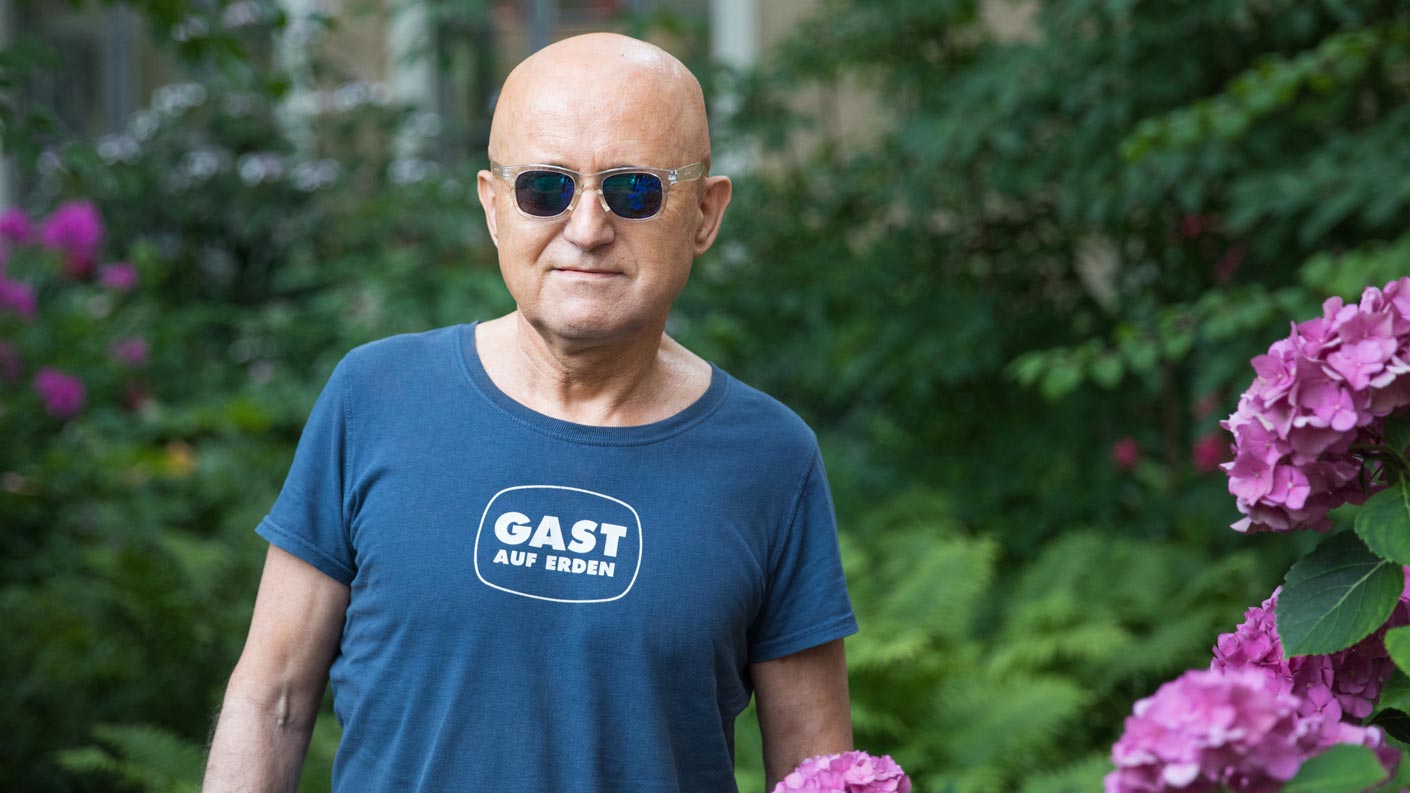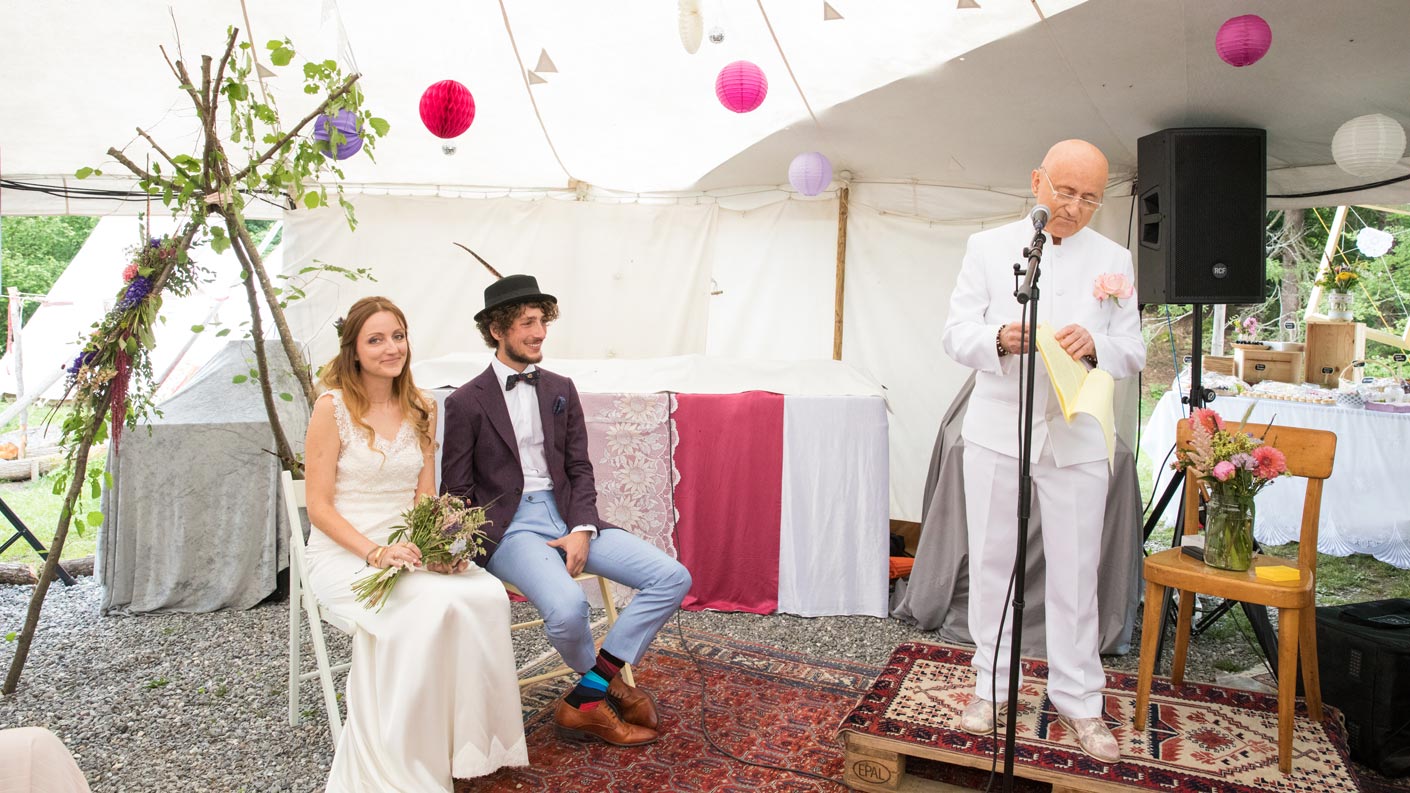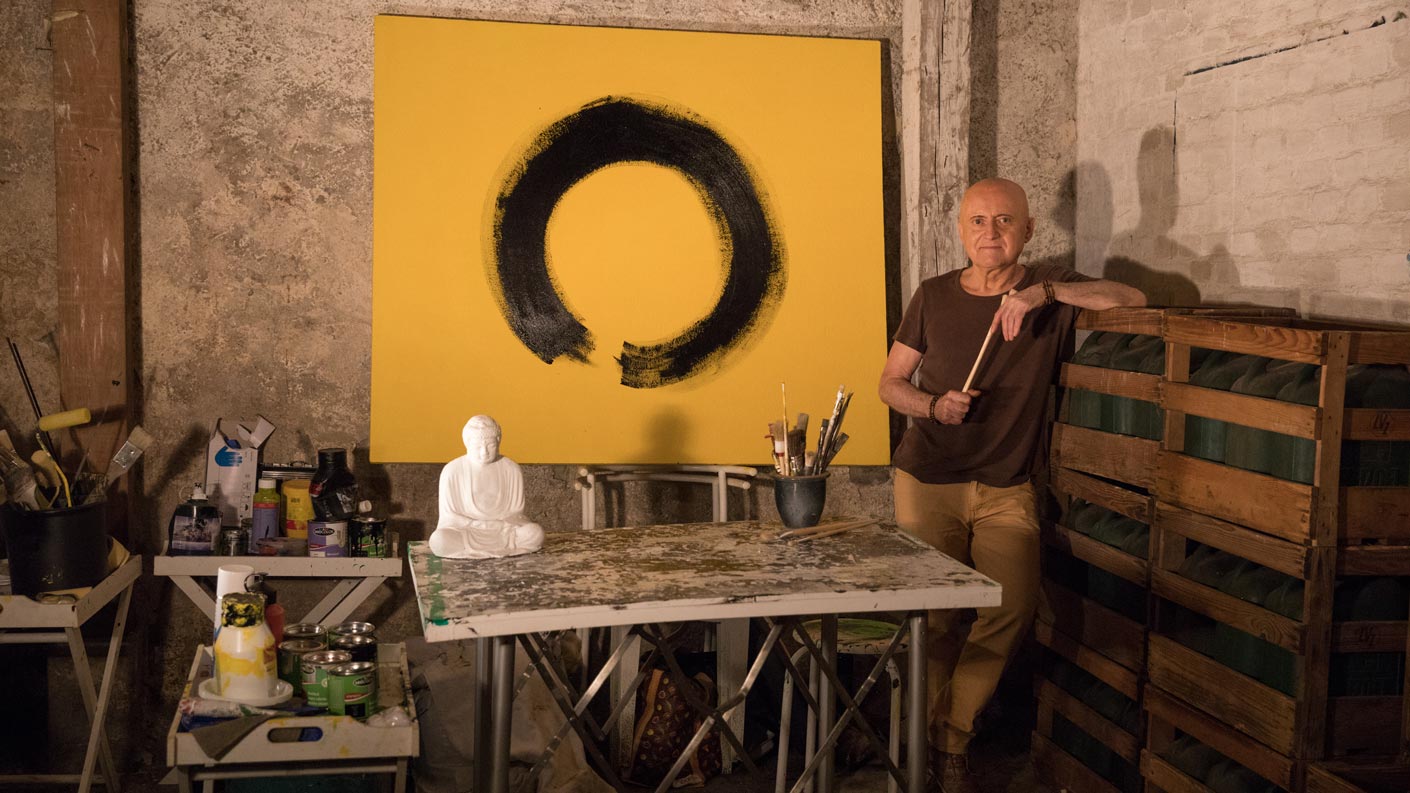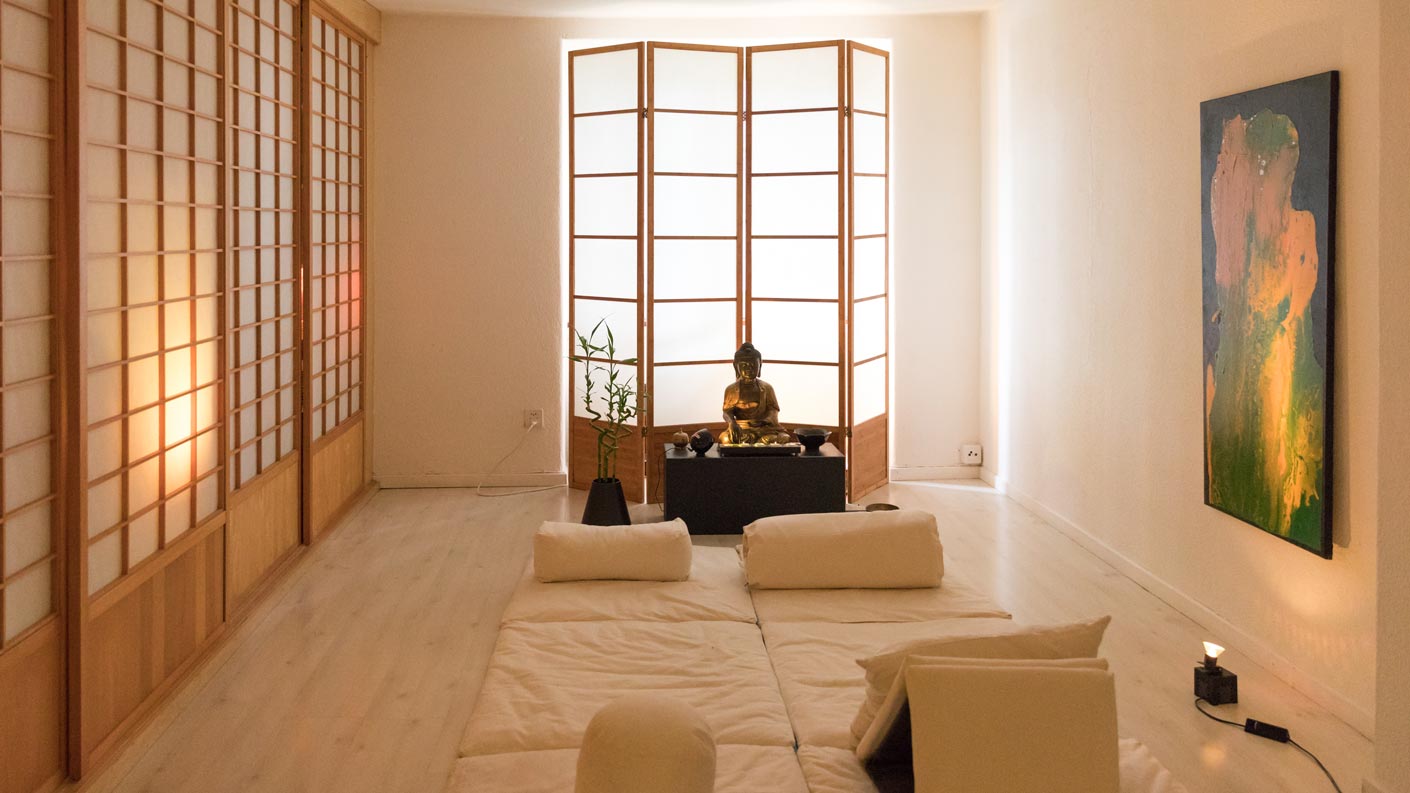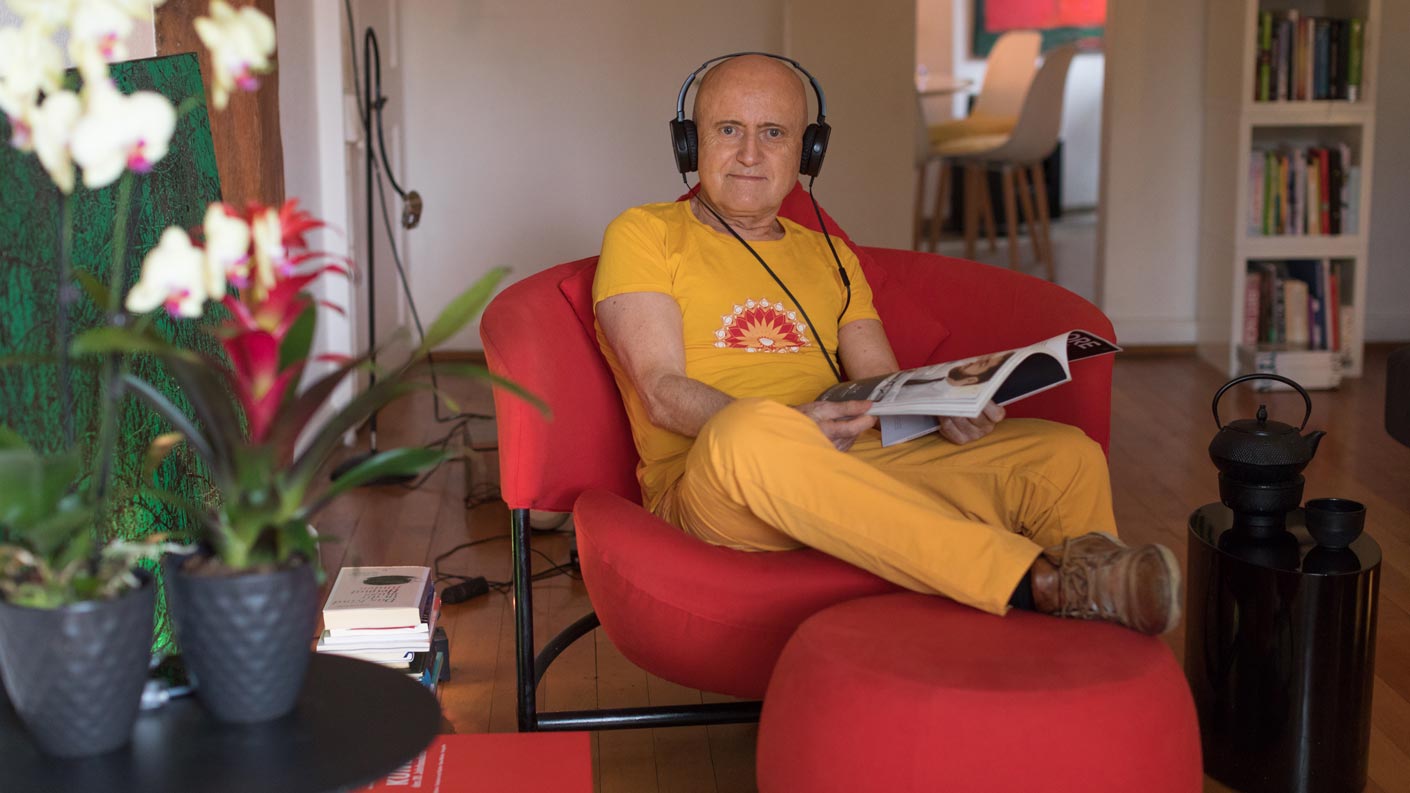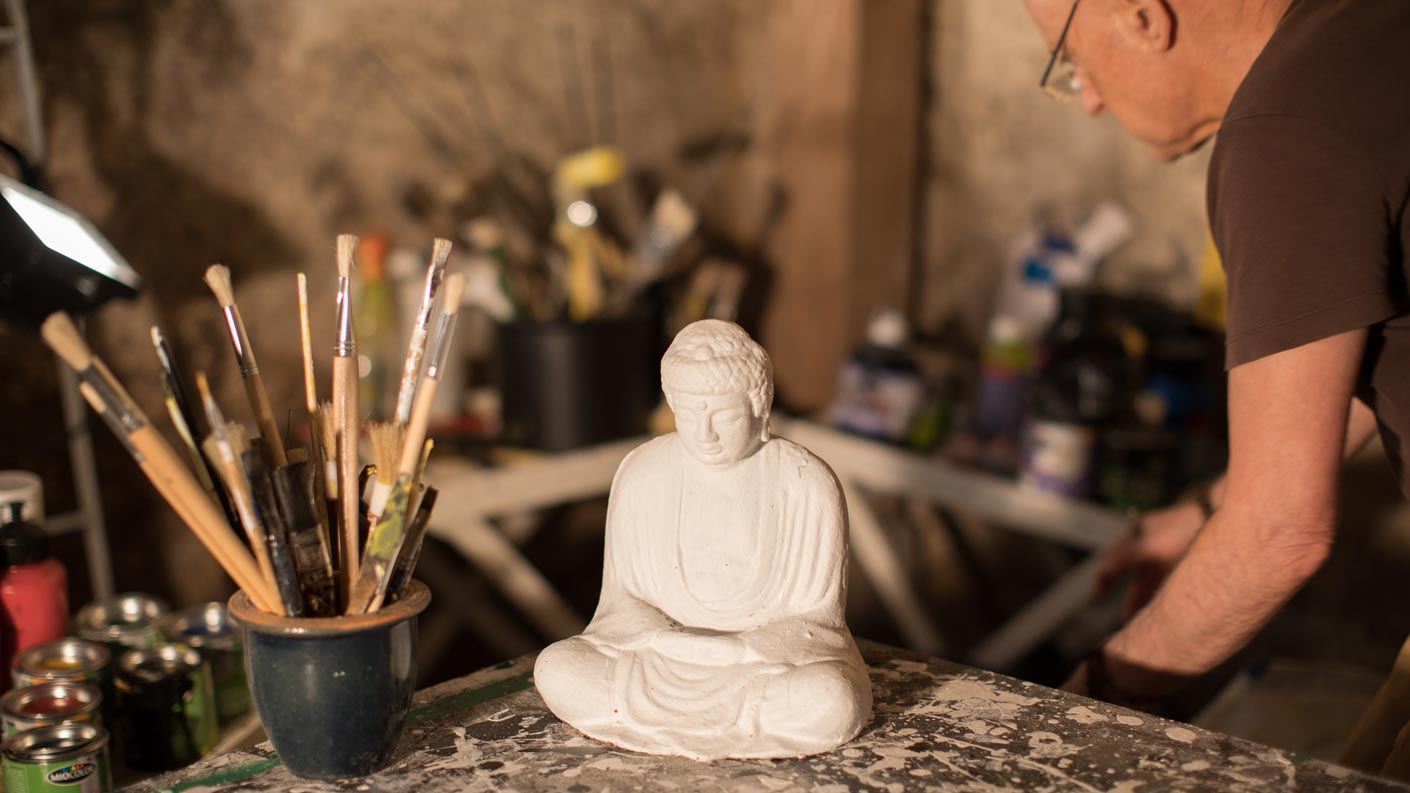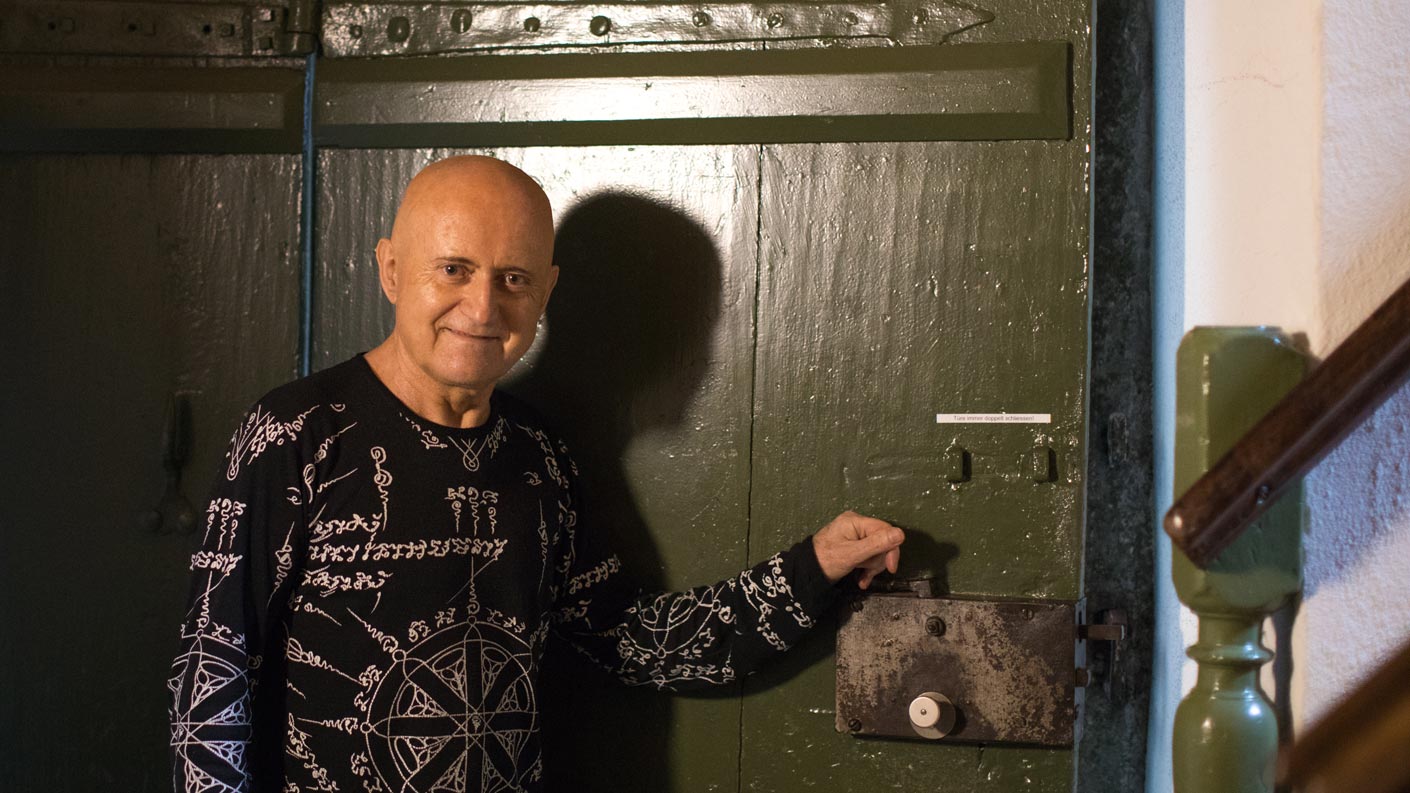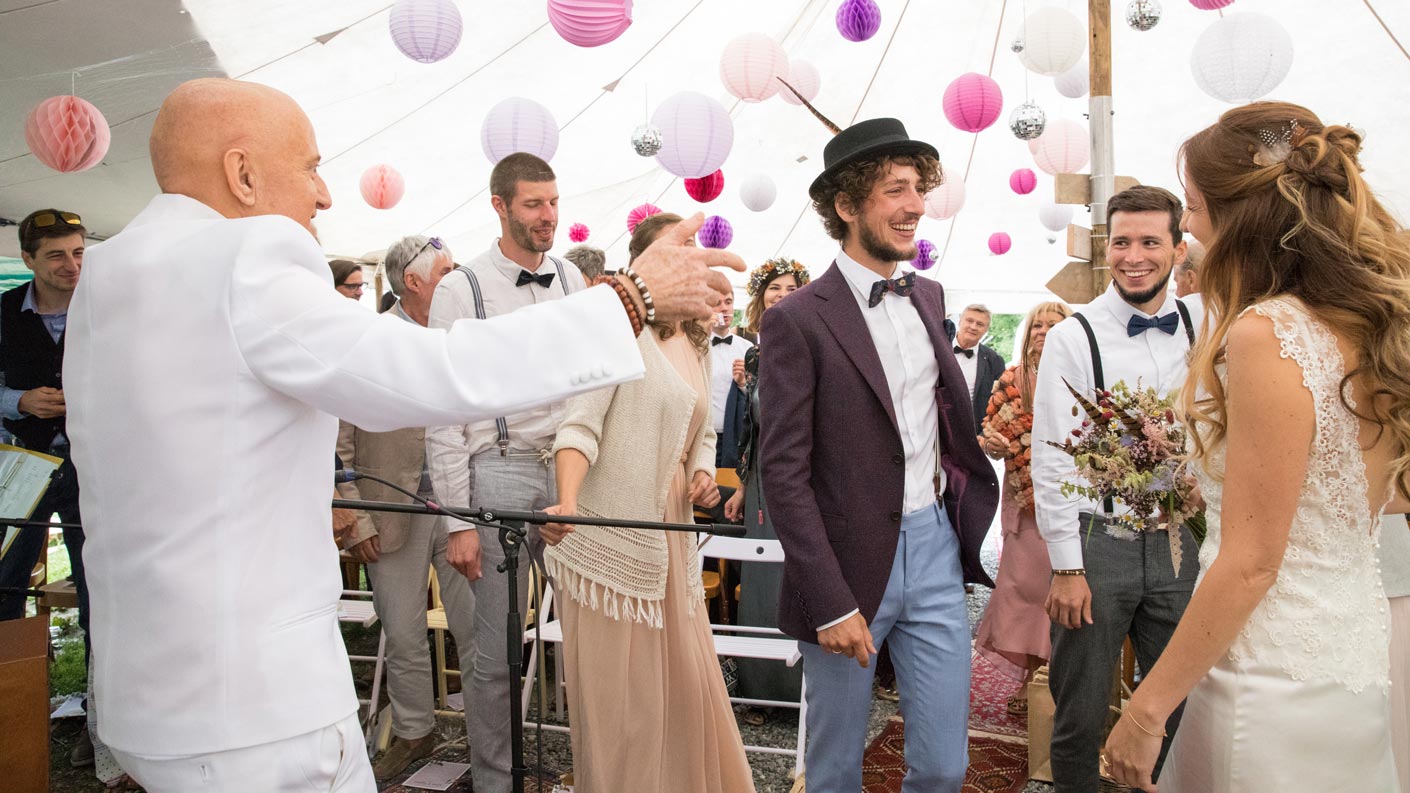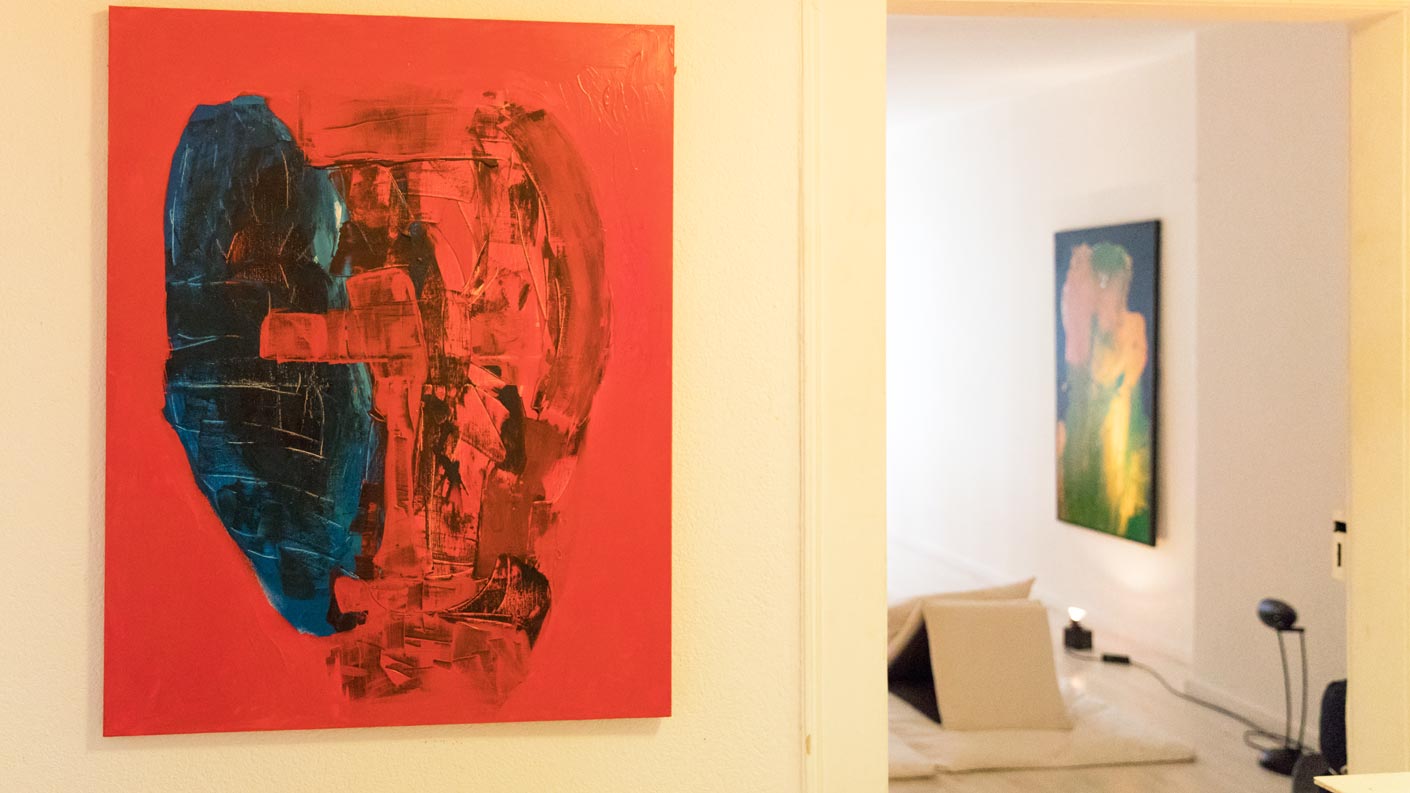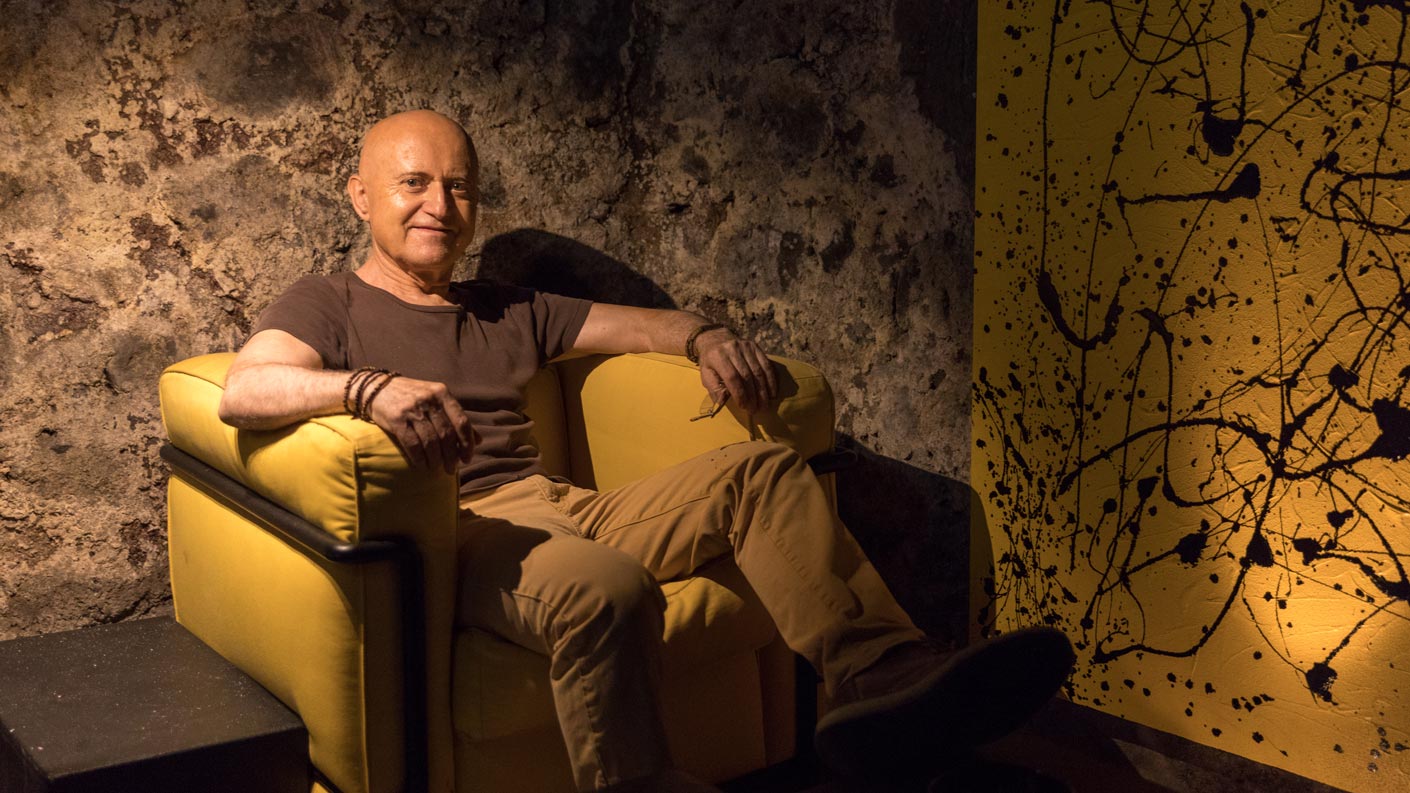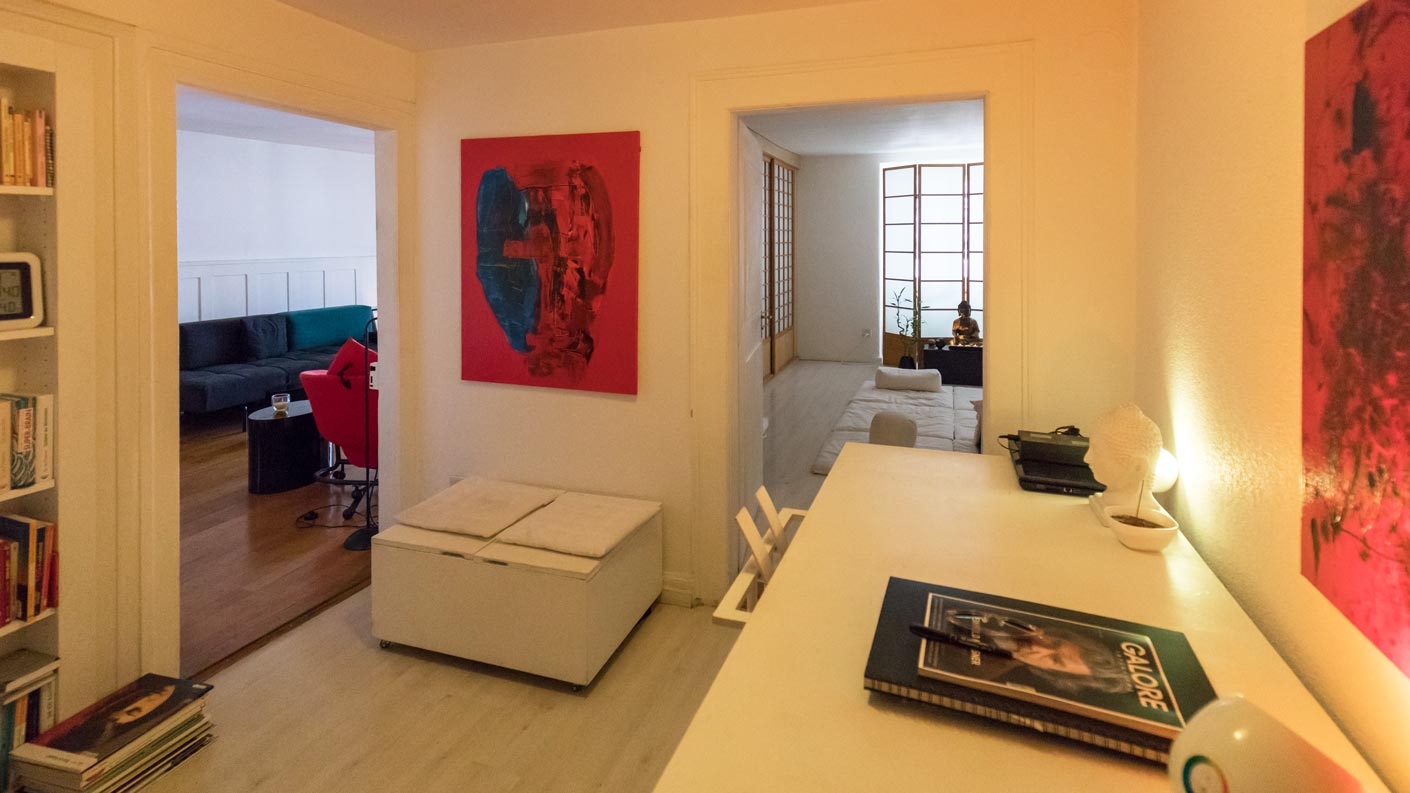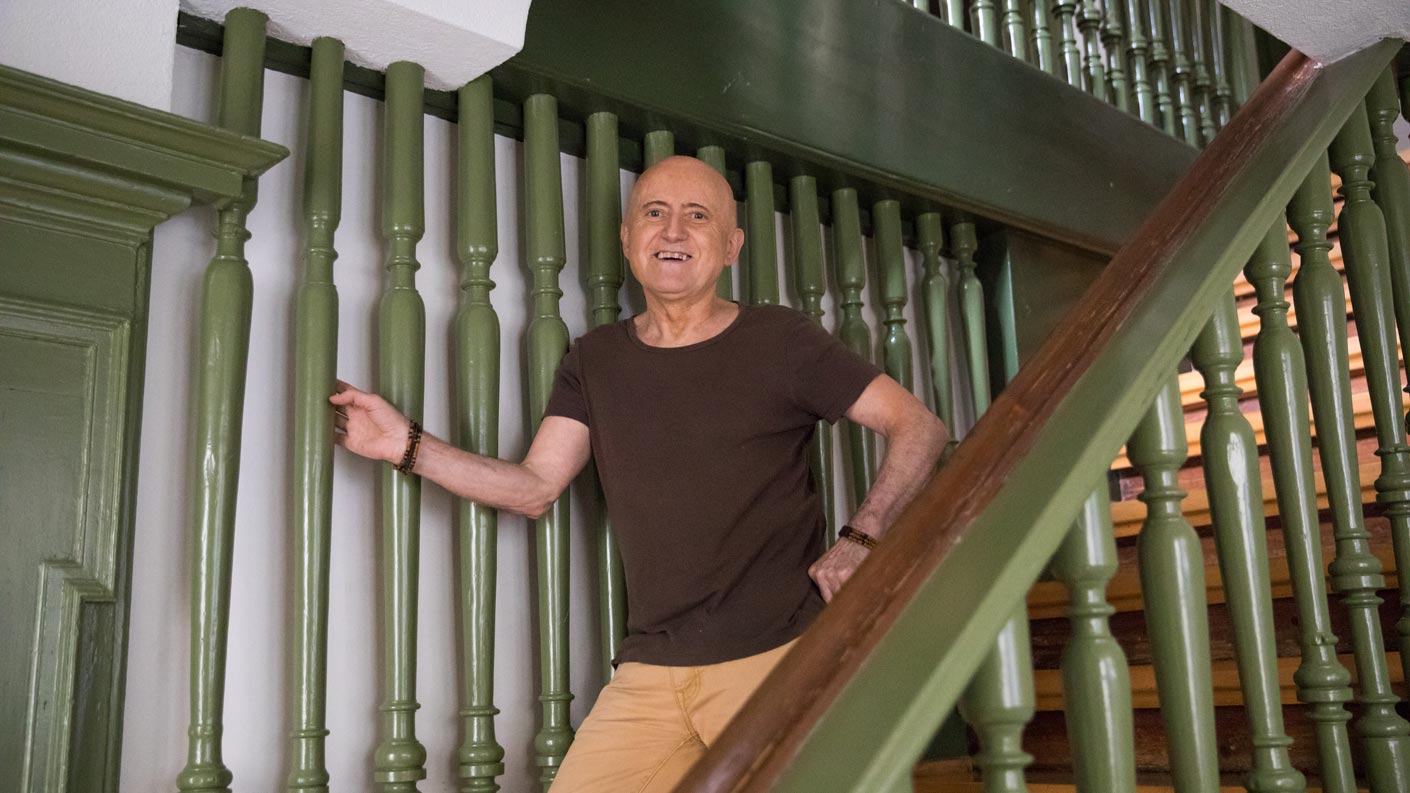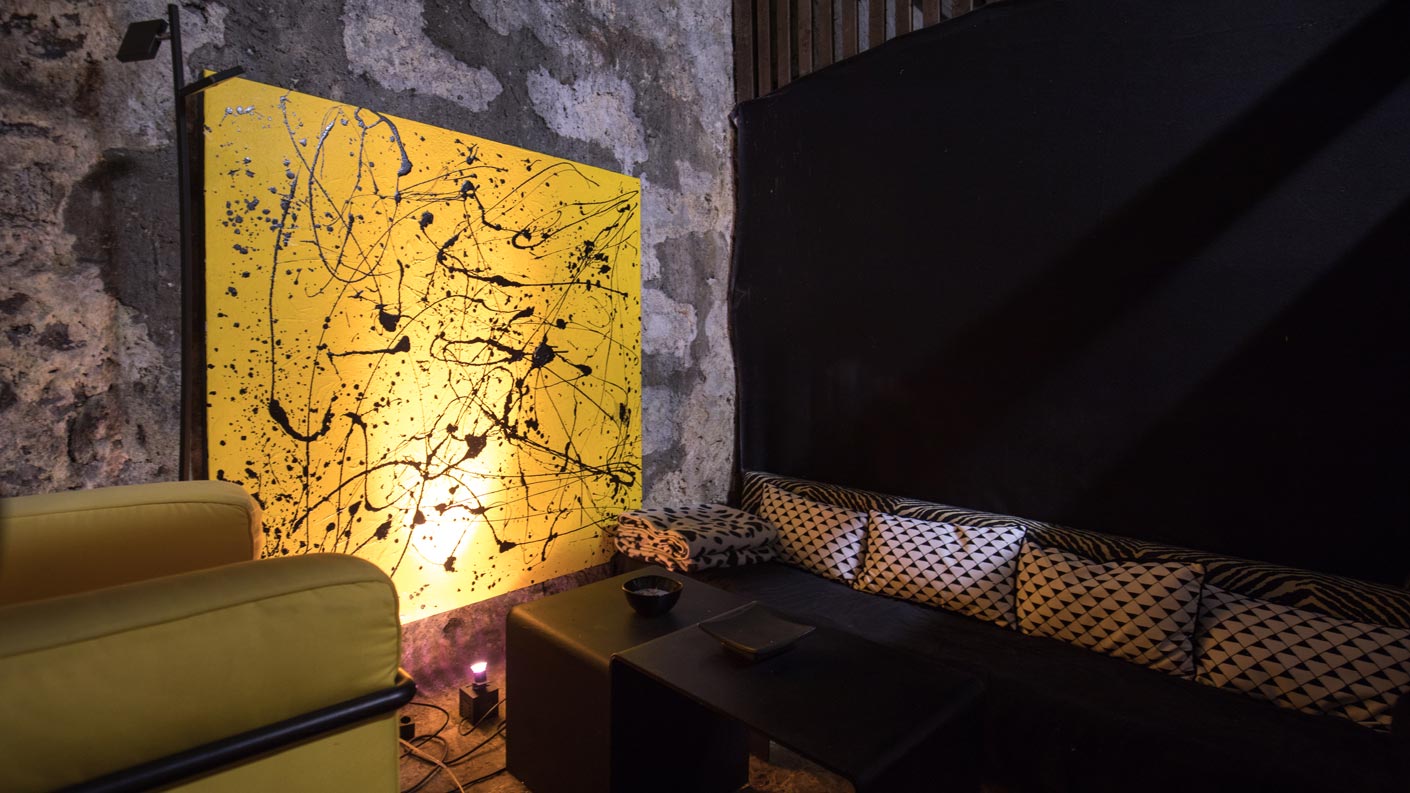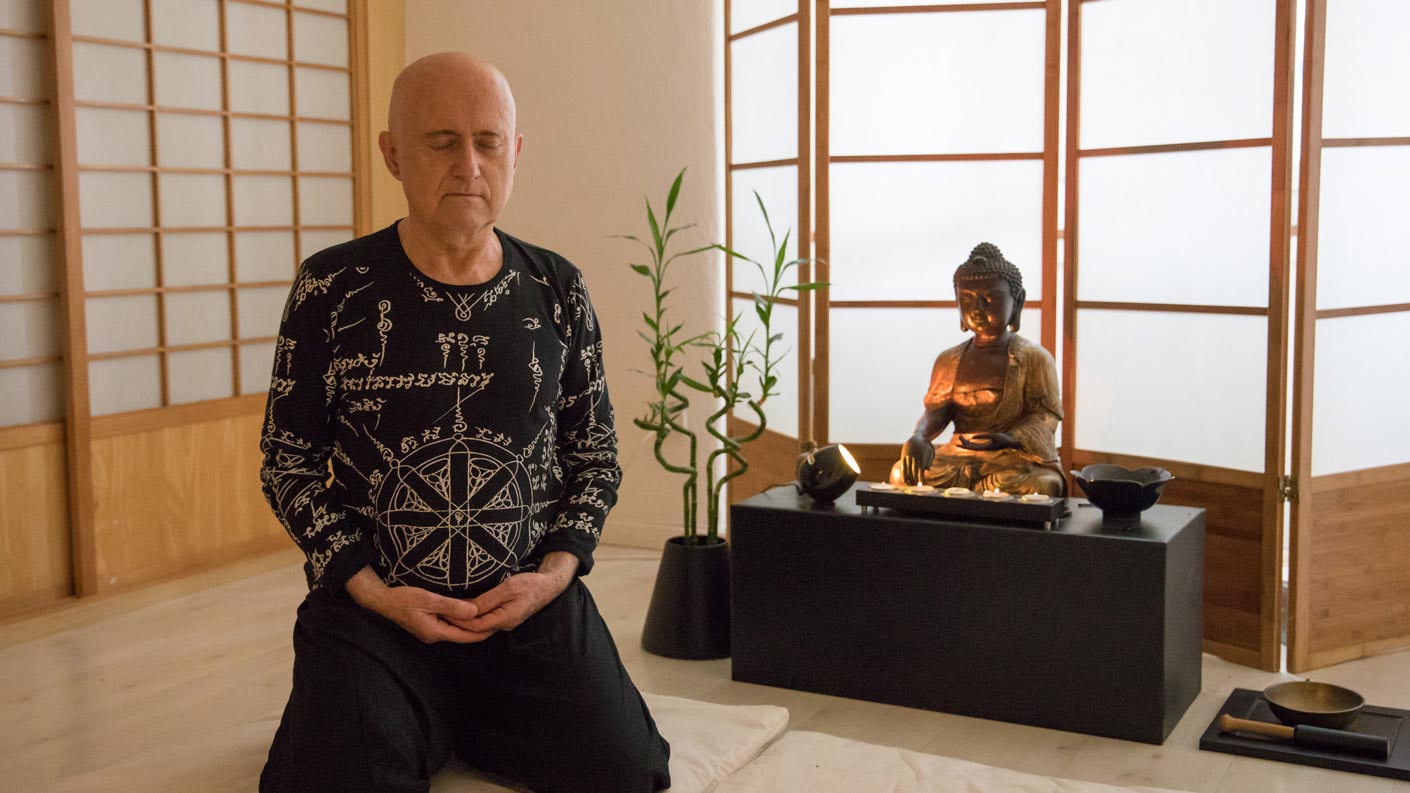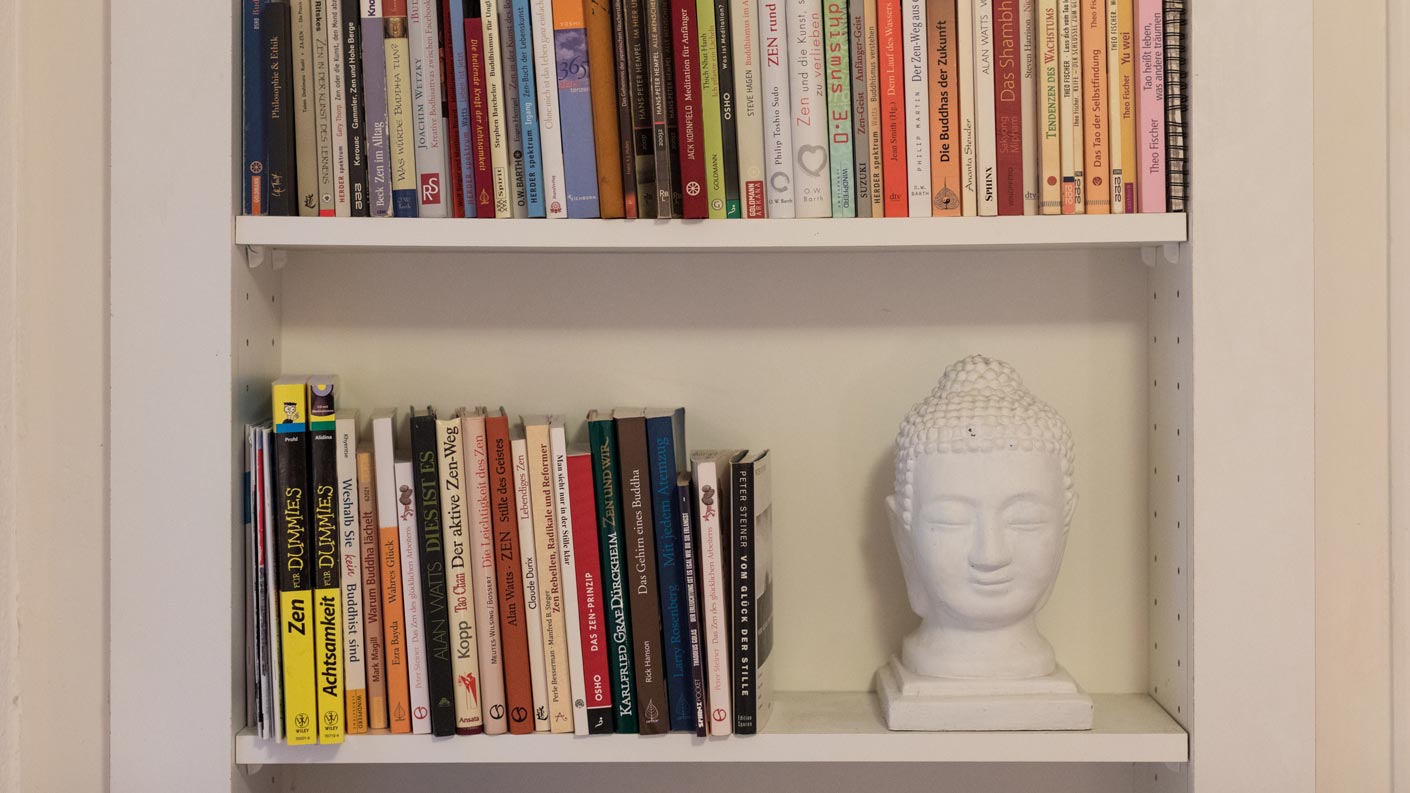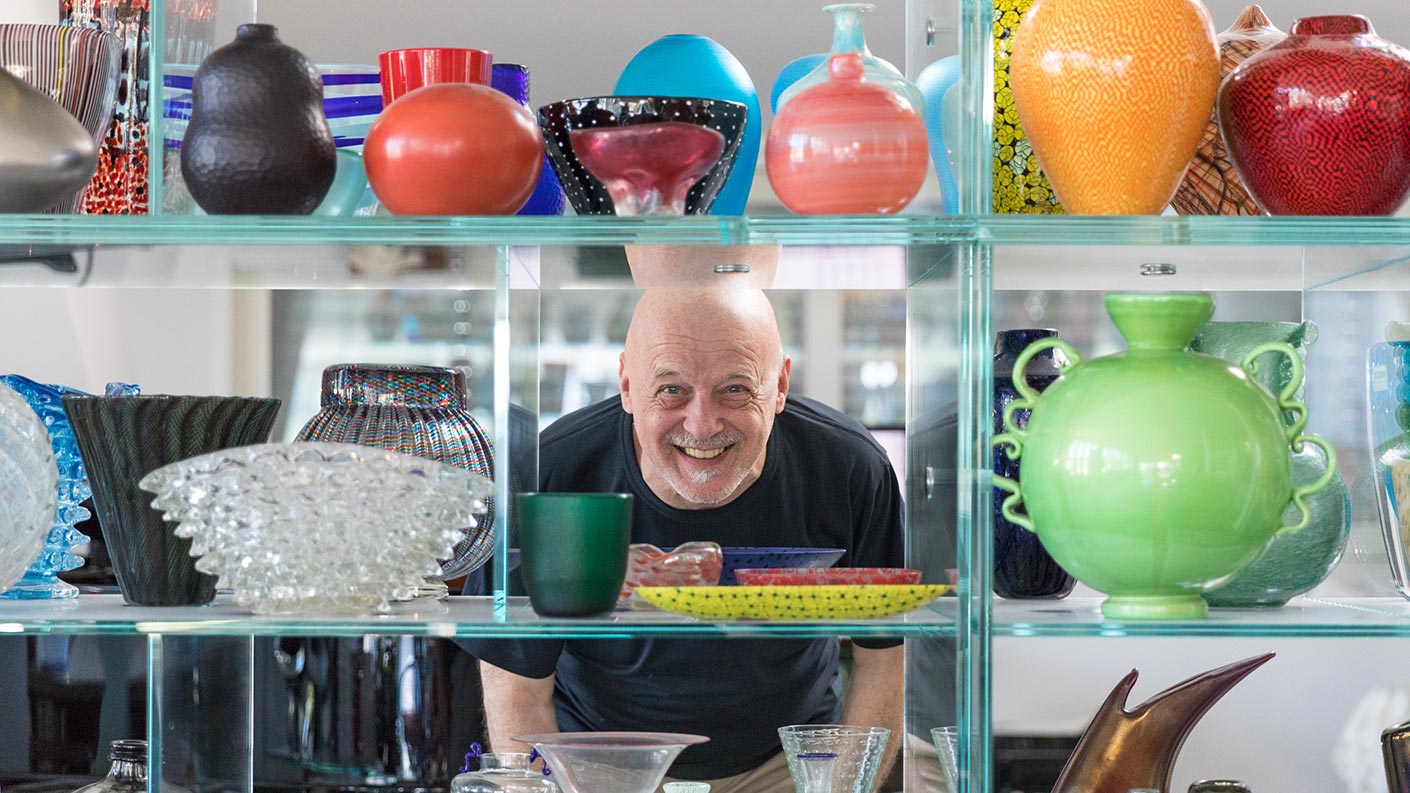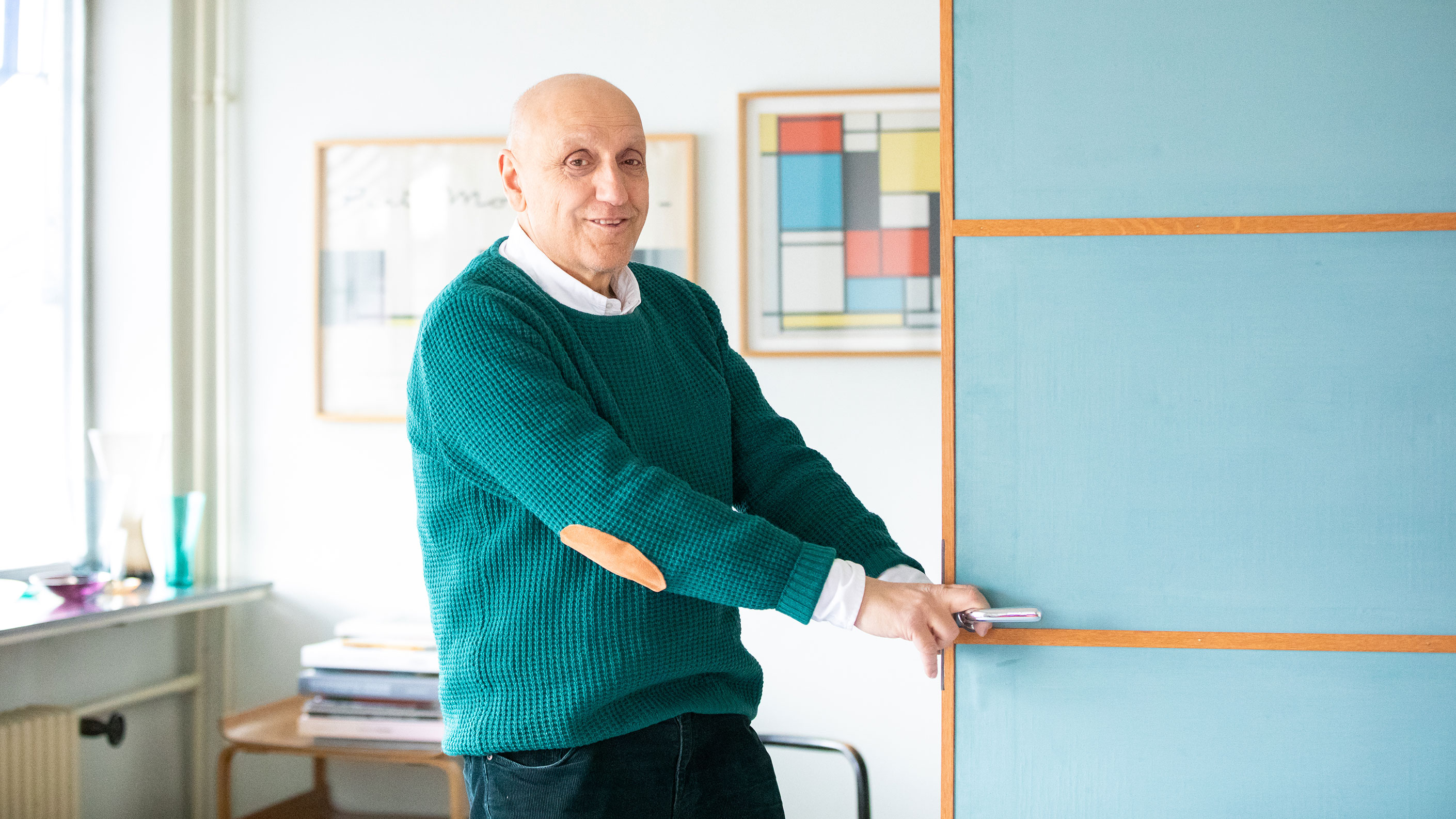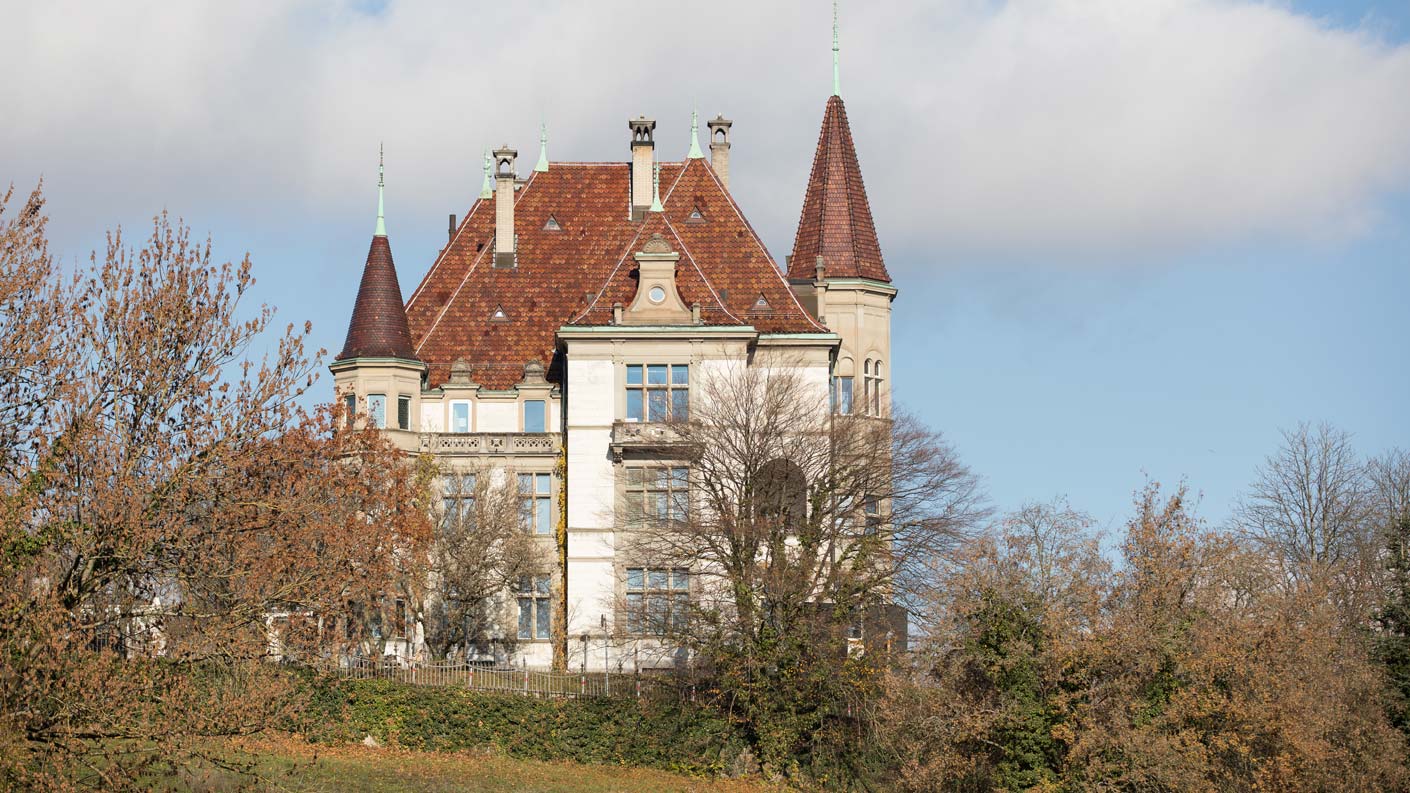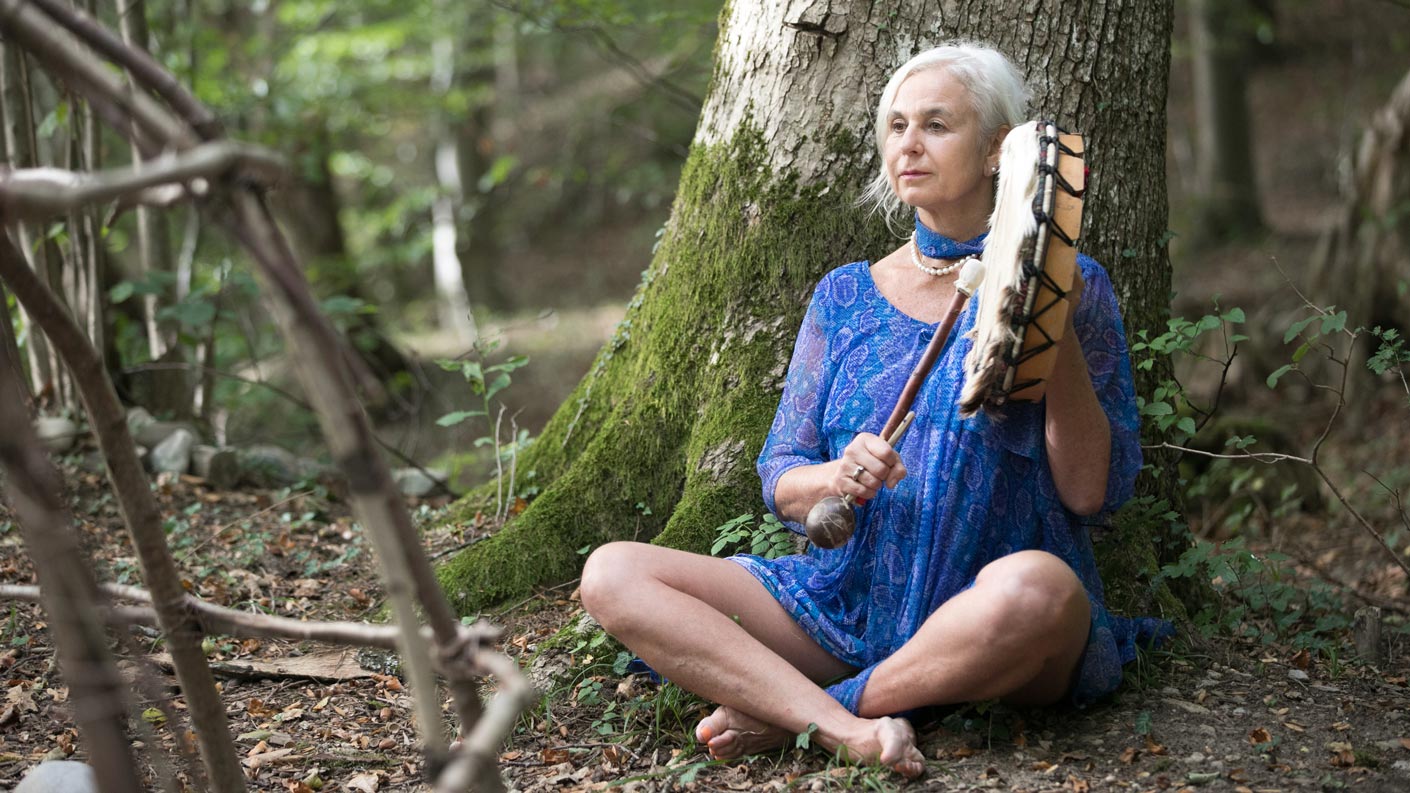‘I must have been a monk in a previous life’
Leo Ineichen is still bursting with positive energy and is a regular down at the electro clubs. His philosophy? ‘Dance with life and life dances with you.’ For the last twenty years, he has been living in what locals call the Dörfli – the ‘little village’ of Niederdorf that forms part of Zurich’s old town. His small apartment is furnished in Asian style and festooned with his own paintings.
‘Here, all I can hear is the bells of the Predigerkirche,’ he comments. He is relaxing in the courtyard of the Haus zum schwarzen Garten – the House with the Black Garden. This eerie name comes from an ancient legend. Back in the 14th century, it’s said that a black woman used to grow exotic plants on this spot. They were brought back from the East by a bellmaker who lived in the house at that time. One day, the couple slipped away from Niederdorf – but only after setting fire to the garden.
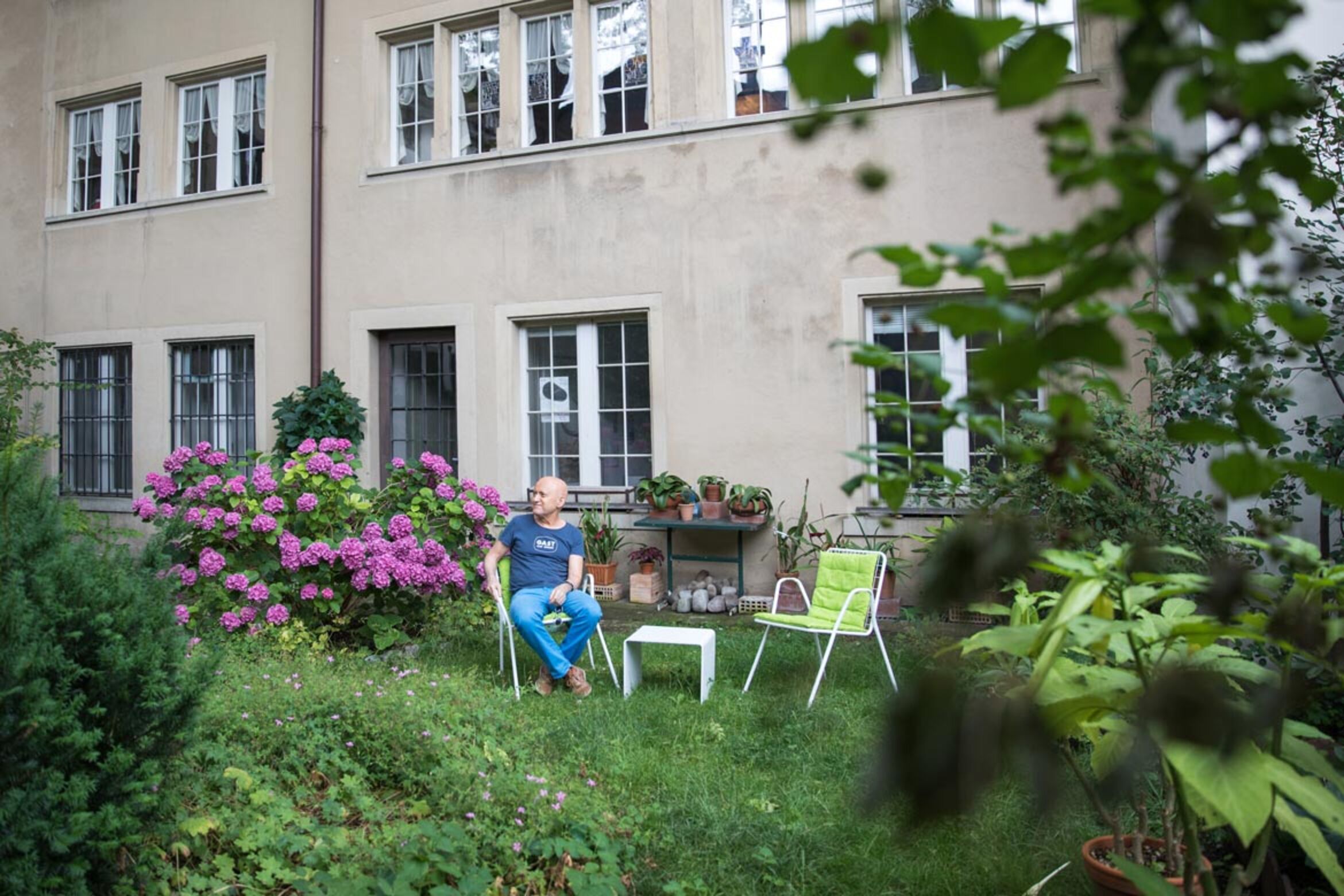
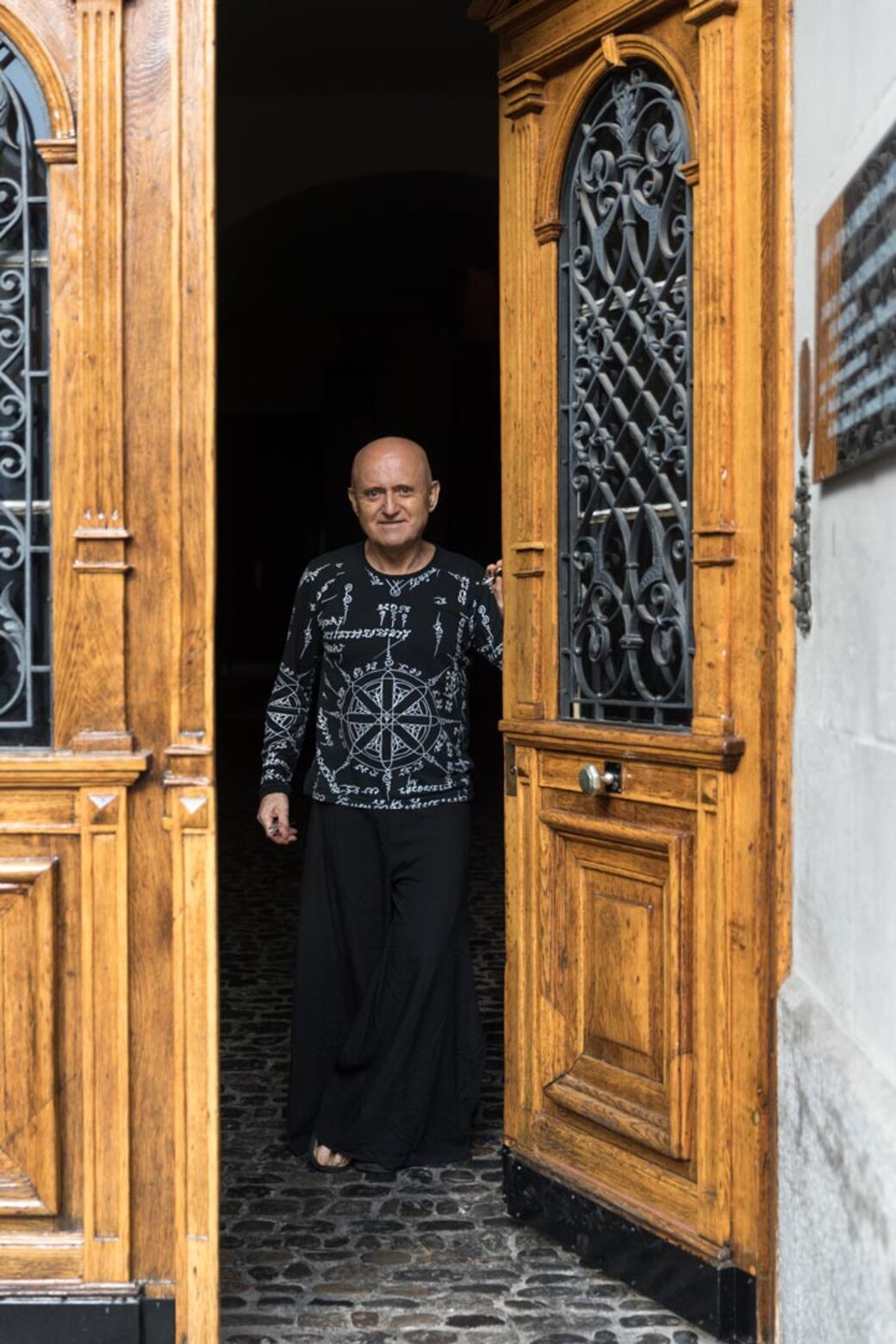
Today, the courtyard is home to huge hydrangea bushes and a 100-year-old ash tree. Leo has lived in this house for more than twenty years. Before that he lived in districts 8 and 3, so it took a while to get used to living in the old town. ‘The Niederdorf area really is a little village,’ says Leo. It’s hard to stay anonymous. ‘But it’s also nice that people still take an interest in each other.’
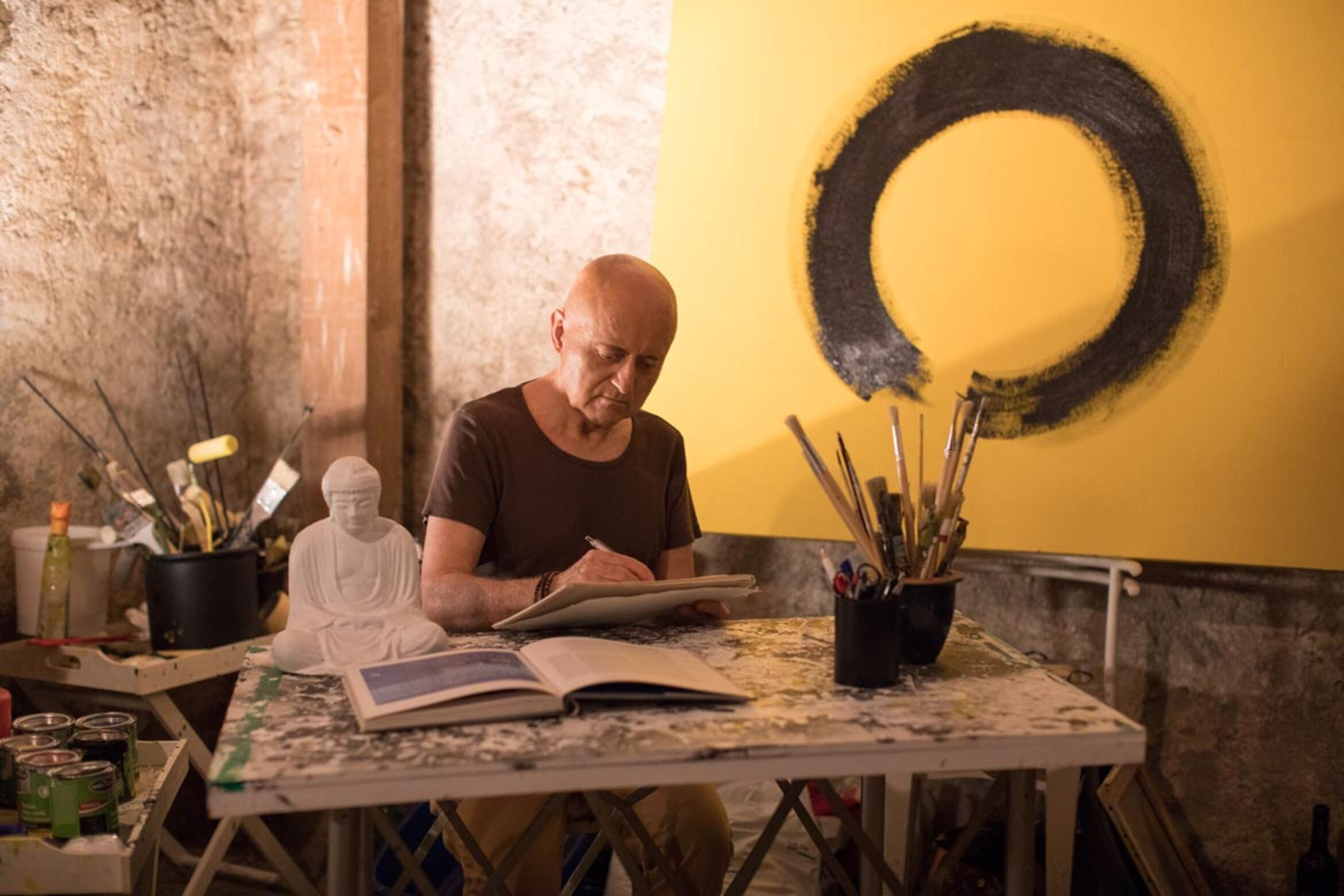
The building has an underground bunker, a hangover from World War I. This is where Leo has set up his artist’s studio: ‘I don’t need daylight, I usually paint at night anyway.’ The former coal cellar is now equipped with comfy seating and cushions to create a chill-out zone. On the wall there hangs a huge action painting – a very physical style of art where the artist experimentally smears or splashes different paint colours onto the canvas.
Leo has never had a bed.
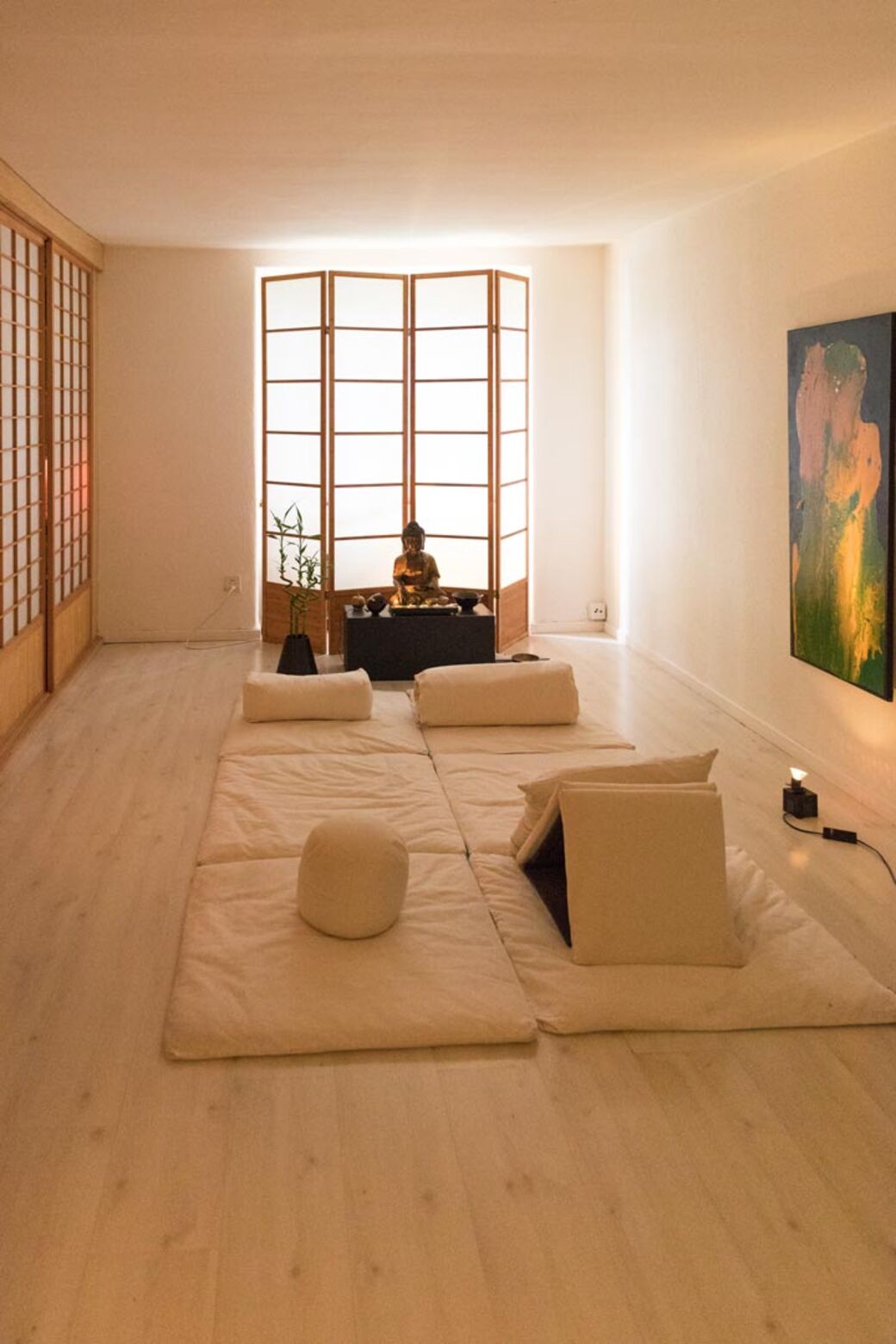
Piles of Japanese guest slippers await visitors outside Leo’s second-floor apartment. He has furnished one of his two rooms in Asian style. A slightly transparent partition stands in front of the window, and most of Leo’s belongings are tucked away behind sliding walls made of rice paper: ‘I love the traditional Japanese look,’ he says. ‘Cluttered rooms are not my cup of tea.’ Leo has never had a bed. When it’s time to sleep, he simply lays two or three futons on top of each other. ‘An Indian yogi once told me that I must have been a monk in a previous life.’
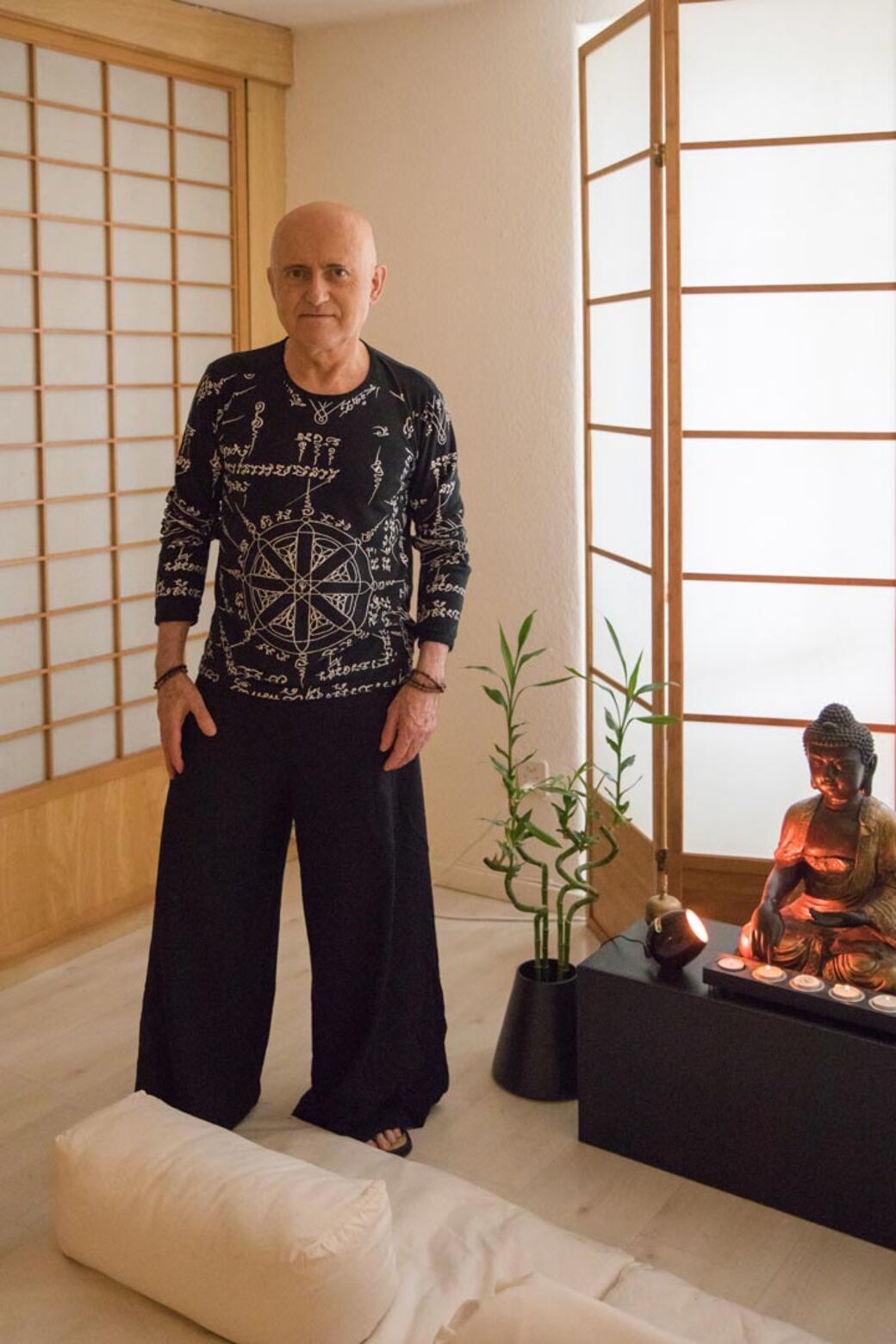
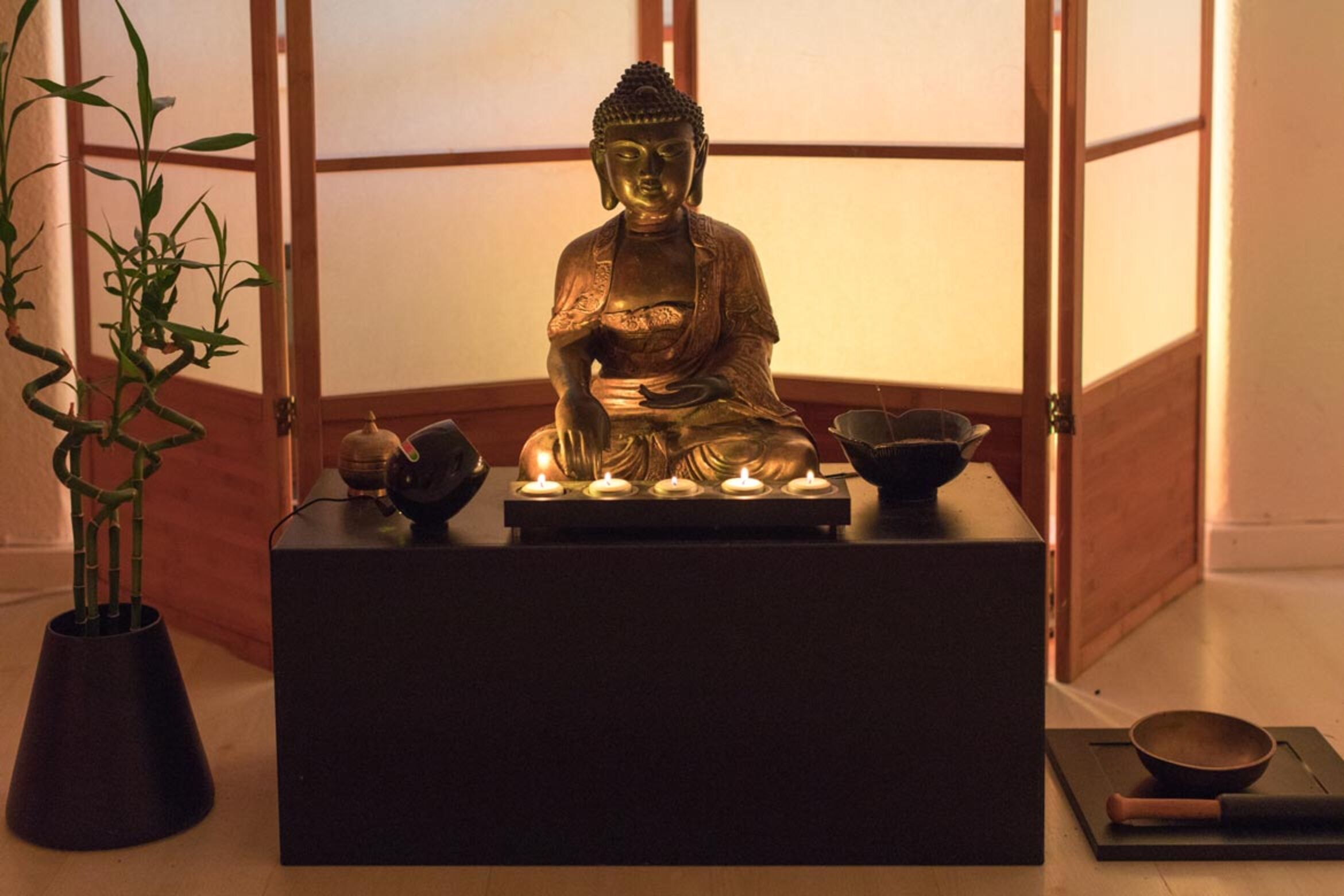
Leo meditates regularly in these simple surroundings, usually wearing a black robe: ‘Black is the most intense colour and it helps me concentrate’. He has been interested in Zen philosophy for thirty years and has spent time living in a monastery.
His philosophy for living? Less is more. His other room is simply furnished with a modern sofa and two armchairs. His own paintings lean against the walls.
‘Bright young people are often impressively mature in their thinking, while old people can be annoying with their narrow-mindedness.’
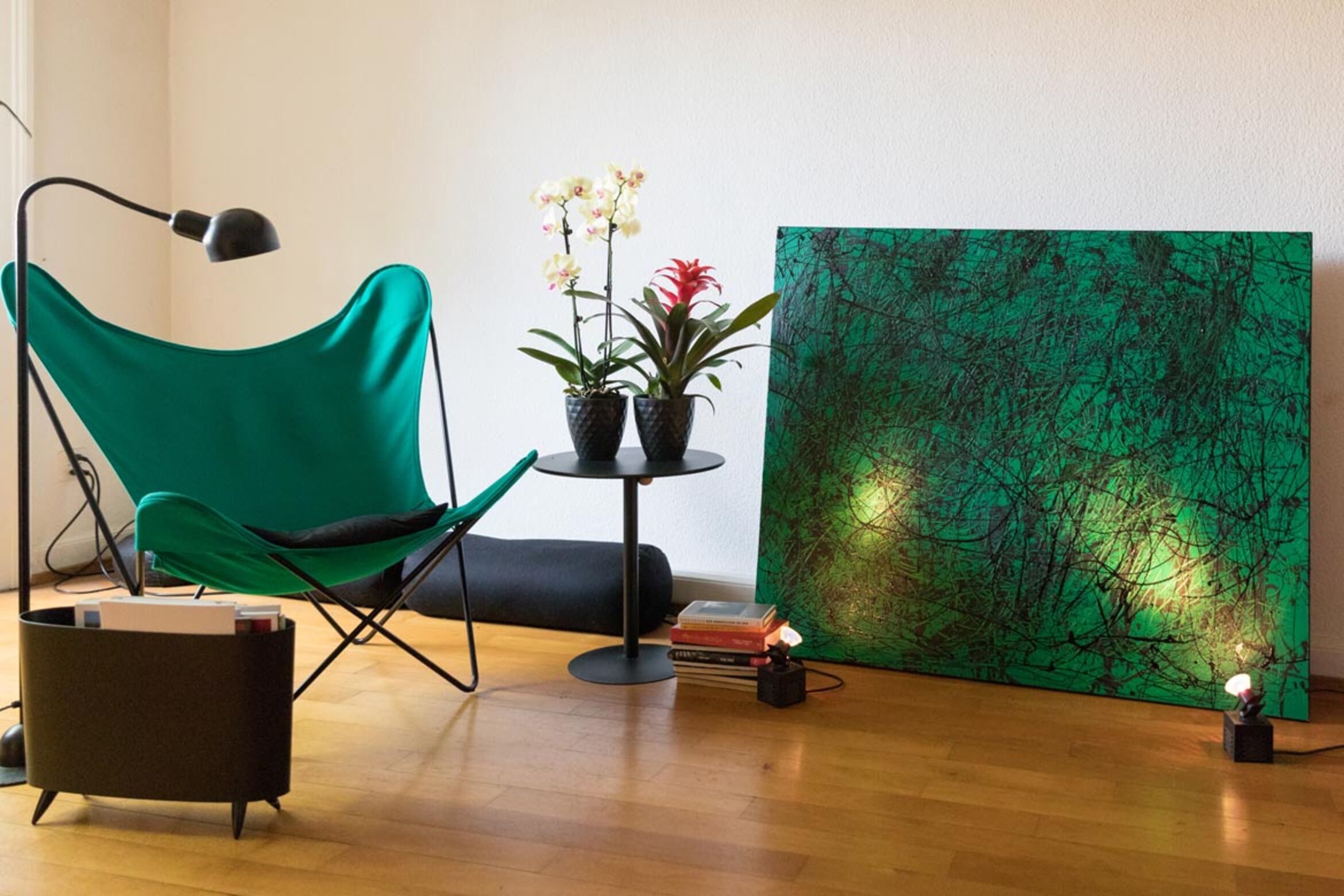
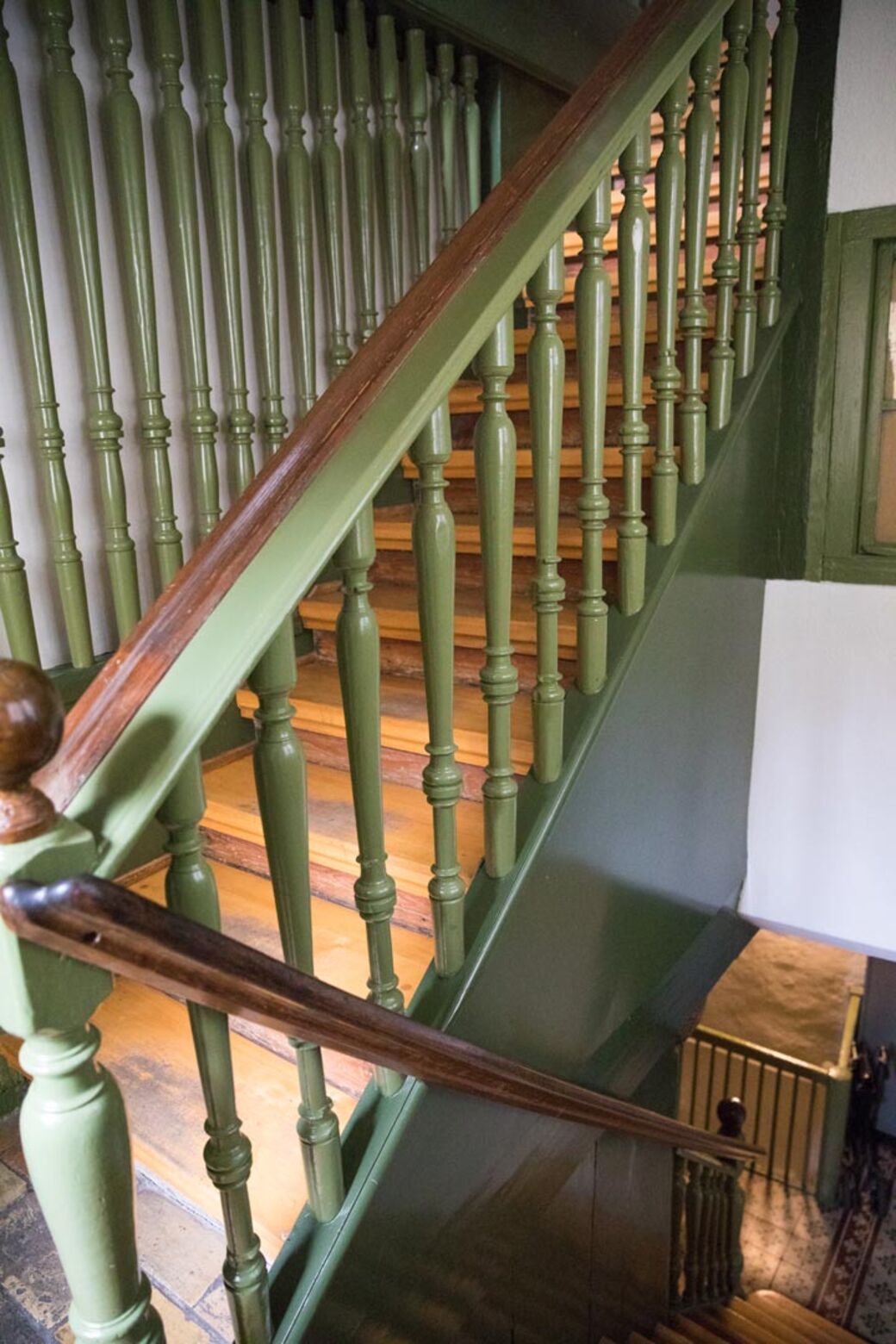
When friends come to visit, Leo entertains them in his bedroom or meditation room, where he sets up a low table – ‘just like in Japan’. He has a wide, very diverse circle of friends ranging in age from 25 to 90. ‘Bright young people are often impressively mature in their thinking, while old people can be annoying with their narrow-mindedness.’ With some notable exceptions, he hastens to add.
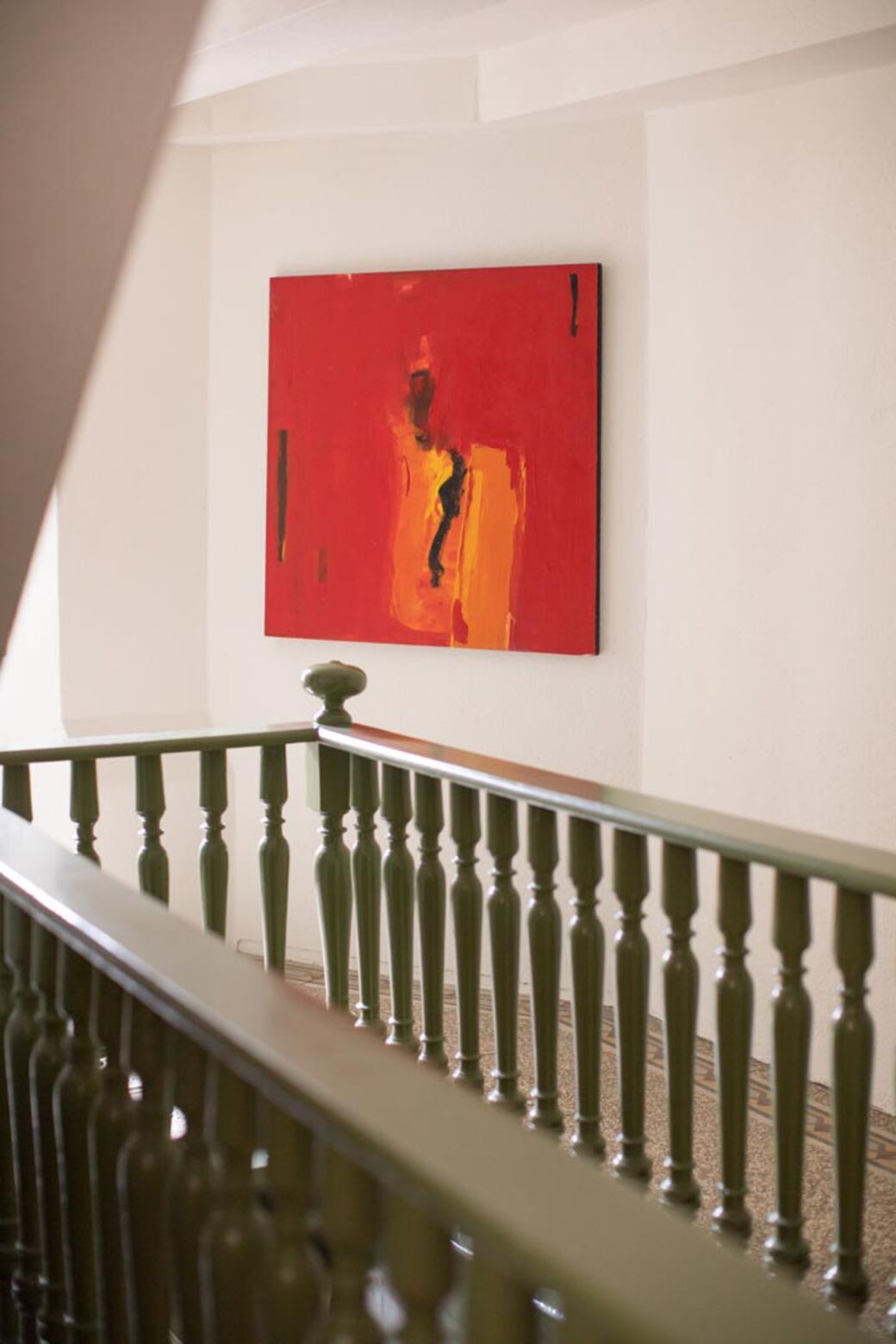
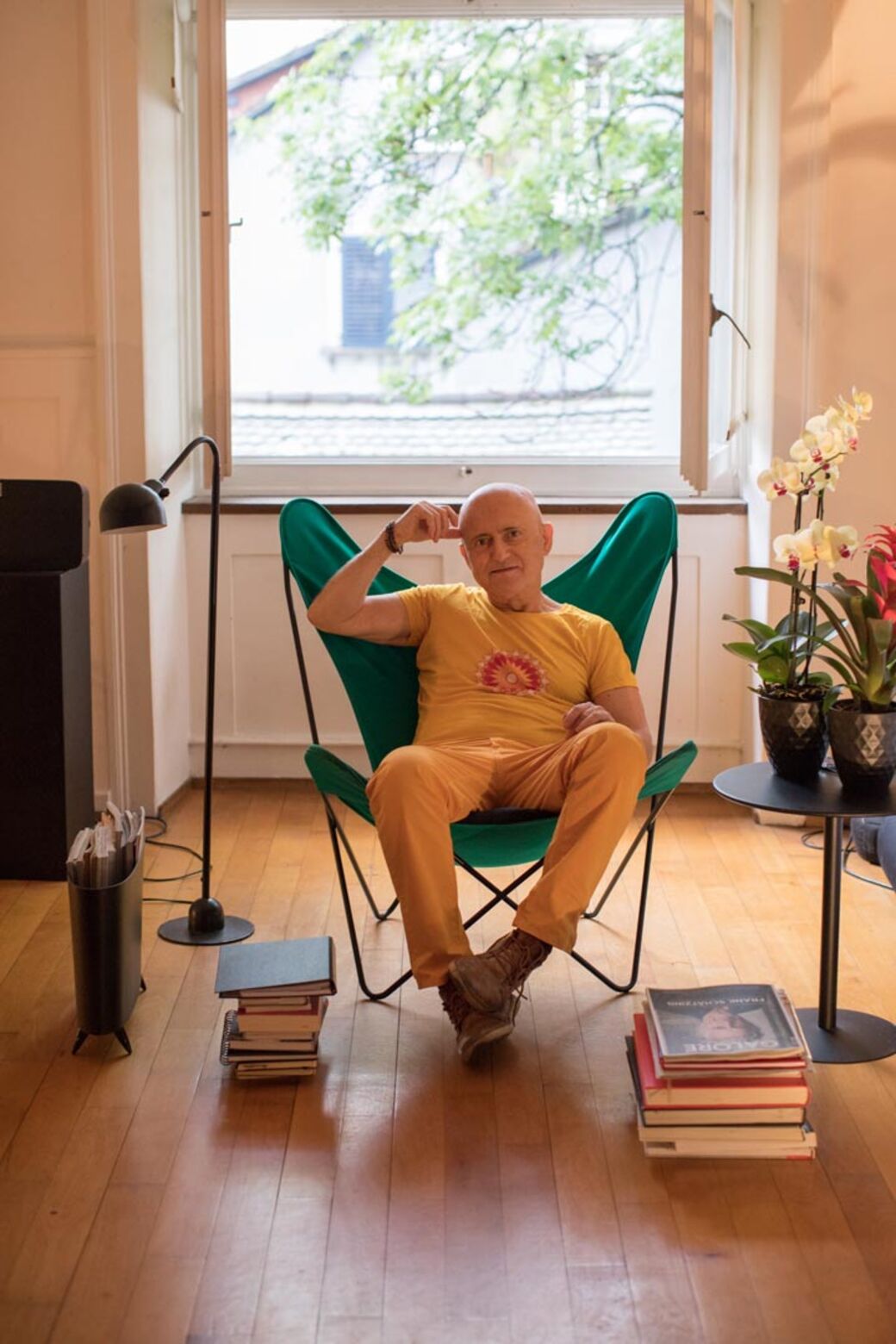
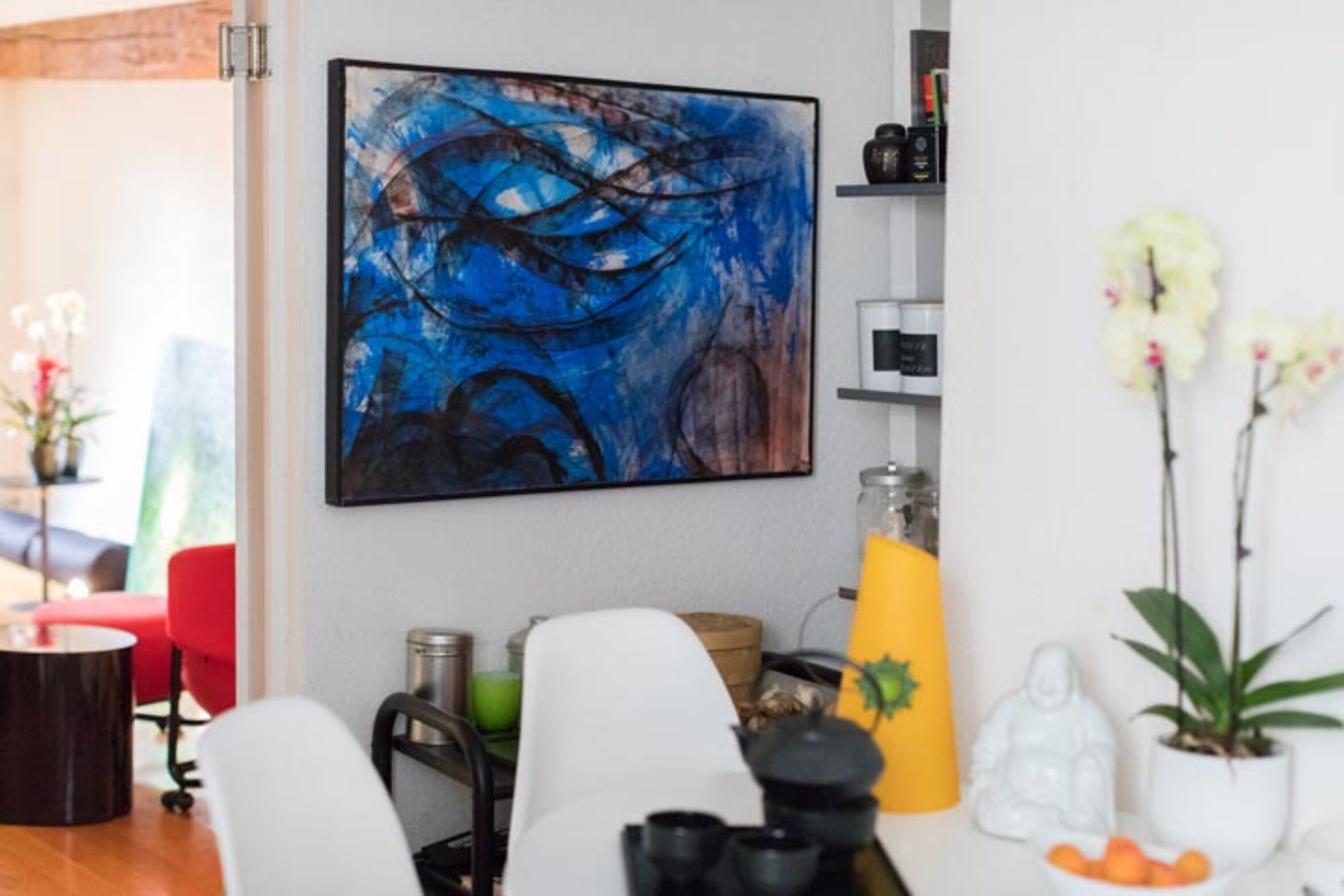
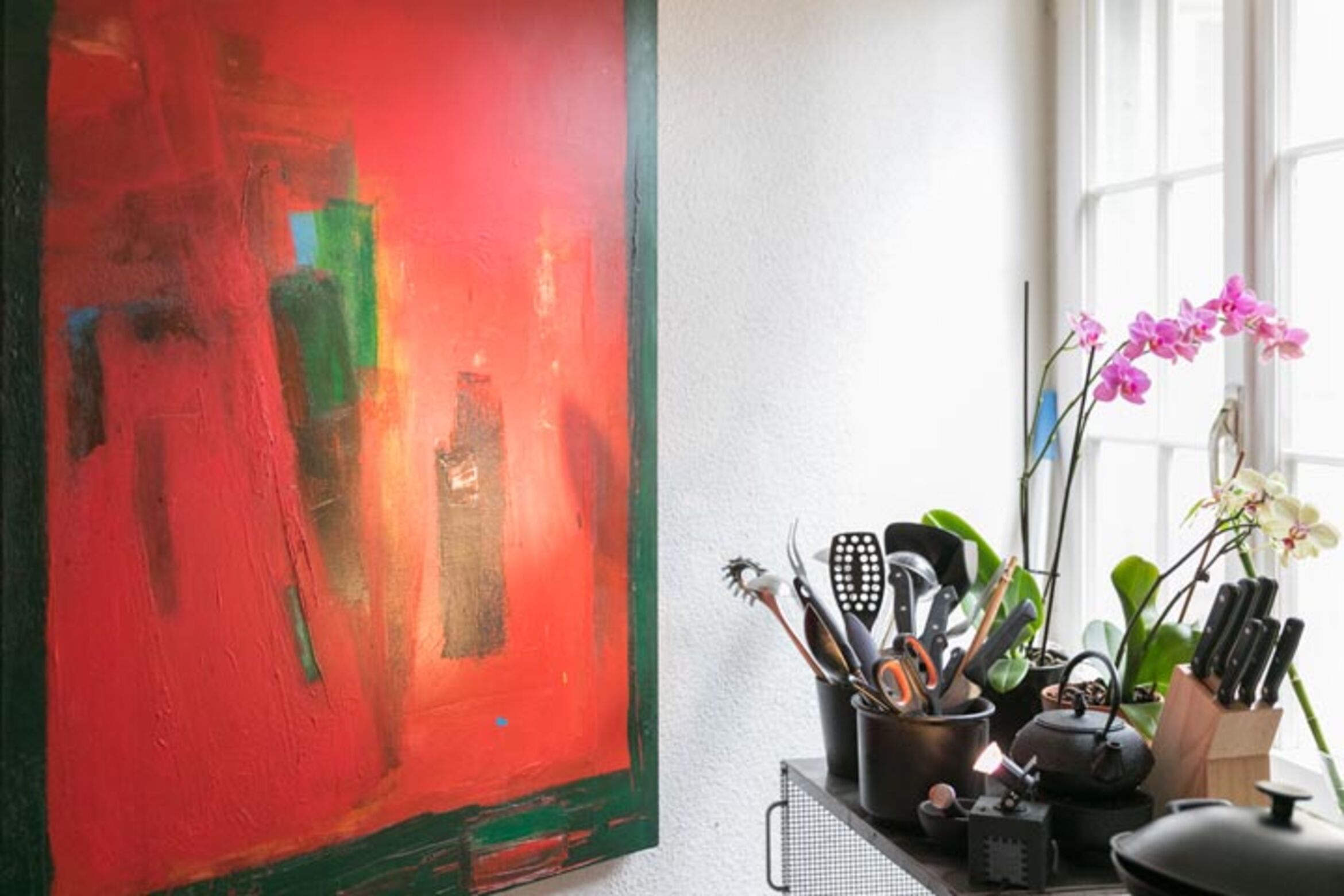
‘Dancing in the clubs and at raves finally made me feel free.’
Leo recently celebrated his 69th birthday. He spent years trying to fit in to society but says: ‘I always had the feeling that this isn’t what life is all about.’ As he grew older, he increasingly lost interest in his career and other people’s expectations. ‘I was no longer so fixated on the outside world but listened more to my inner self.’ He started painting. He cites Swiss artists Elisabeth Zollinger and Ivo Tarquini as his most important teachers and role models: ‘They inspired me and taught me to express myself on the canvas spontaneously and fearlessly.’ He likes to paint colourful abstracts. He finds action painting is a great way to switch off. ‘Painting is like dancing with a brush,’ says Leo, who is also a regular on the rave scene.
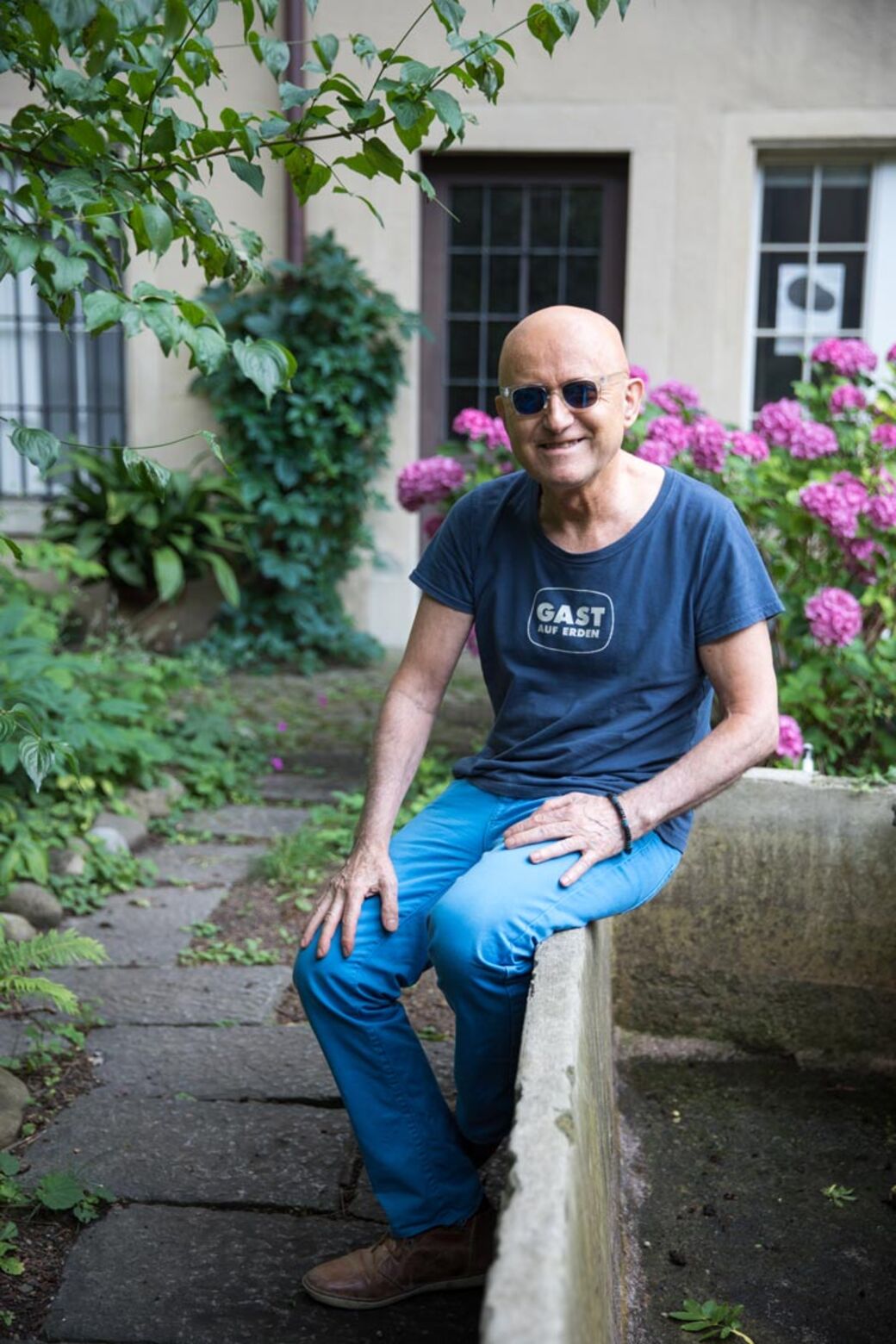
He was in his forties when a friend dragged him along to a rave for the first time. ‘Dancing in the clubs and at raves finally made me feel free,’ says Leo. He recalls something that happened when he was younger. When he was 22, he lived in Brazil for two months. People were poor but happy, and everyone danced together on Sundays. Leo says he was a shy young man at that time. One day, a woman in her late nineties came up to him. In Portuguese, she whispered in his ear: ‘Just dance and God is in you’. He wasn’t religious, but her words had a major impact on him. ‘I firmly believe that everyone has something divine within them – a diamond, even if it’s usually an unpolished one – is in their hearts.’
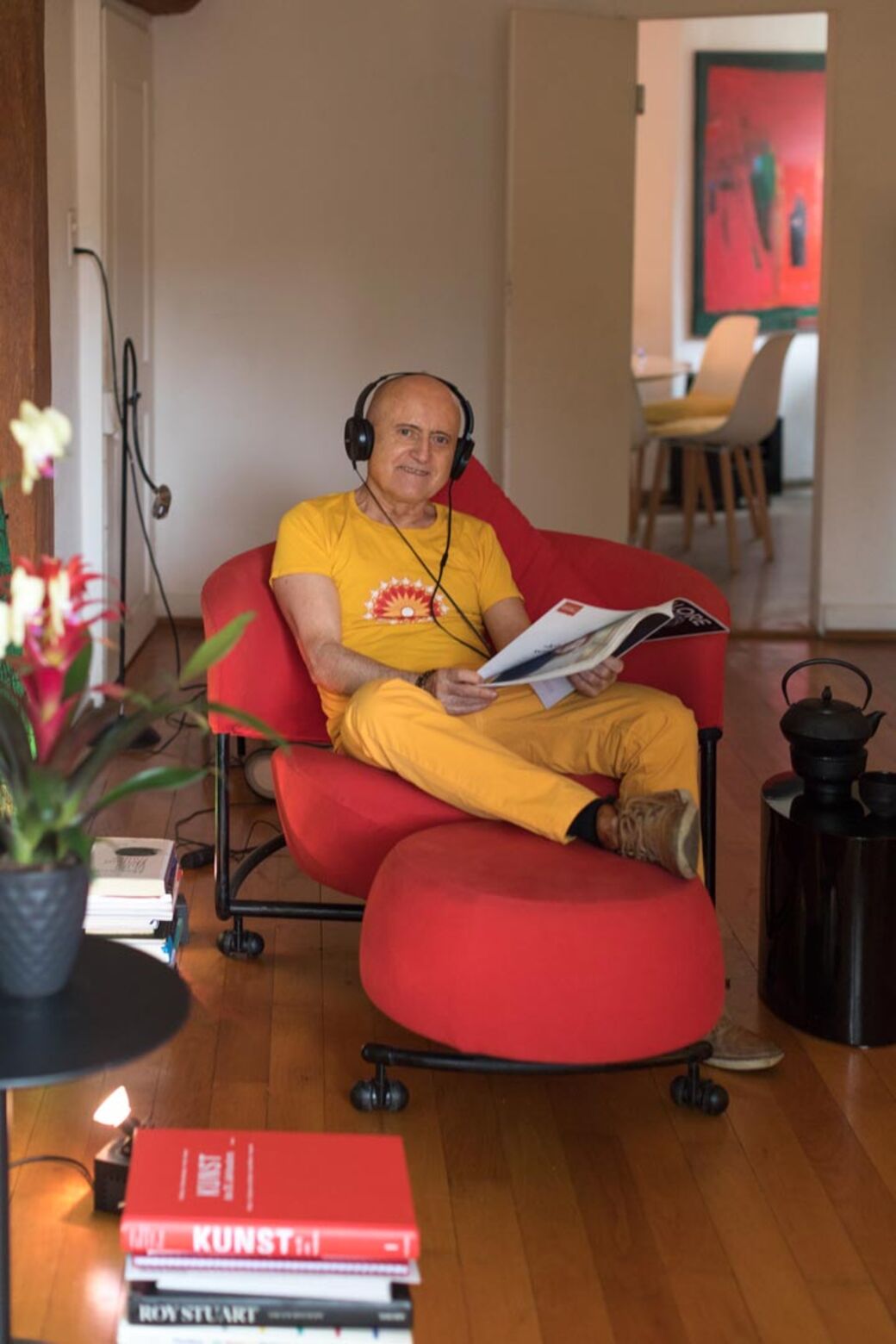
When it comes to dancing, Leo likes a relaxed atmosphere. He used to print slogans on T-shirts and wear them to raves. For example, his chest might be emblazoned with ‘In the beginning there was rhythm’, ‘An embryo can feel its mother’s heartbeat’, or ‘I am timeless’. Years later, a woman told Leo that this last slogan touched her so much that she went home and shed tears of joy. Leo says: ‘The sense of timelessness became my way of living.’ For him, it is important to be totally in the moment.
